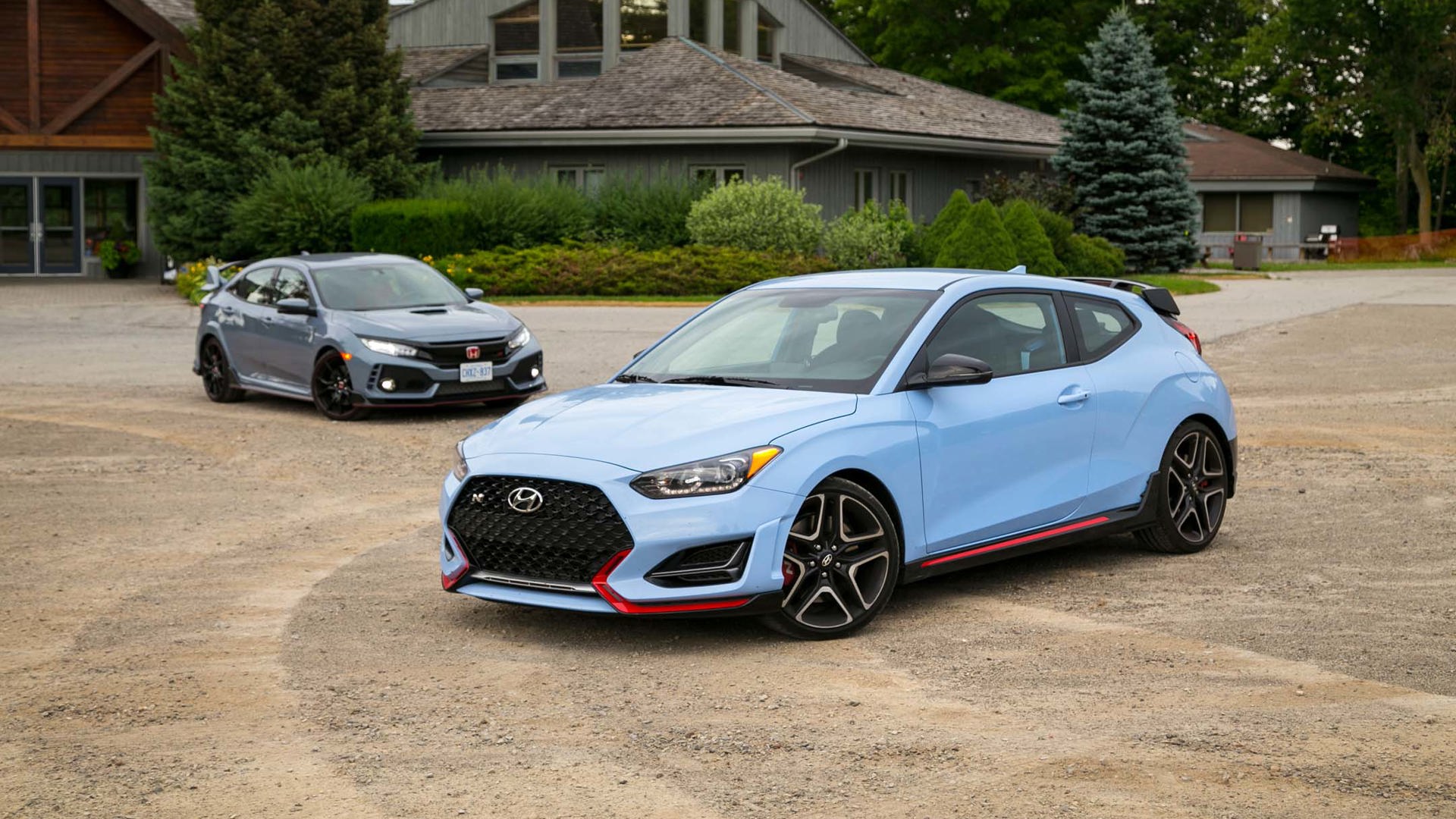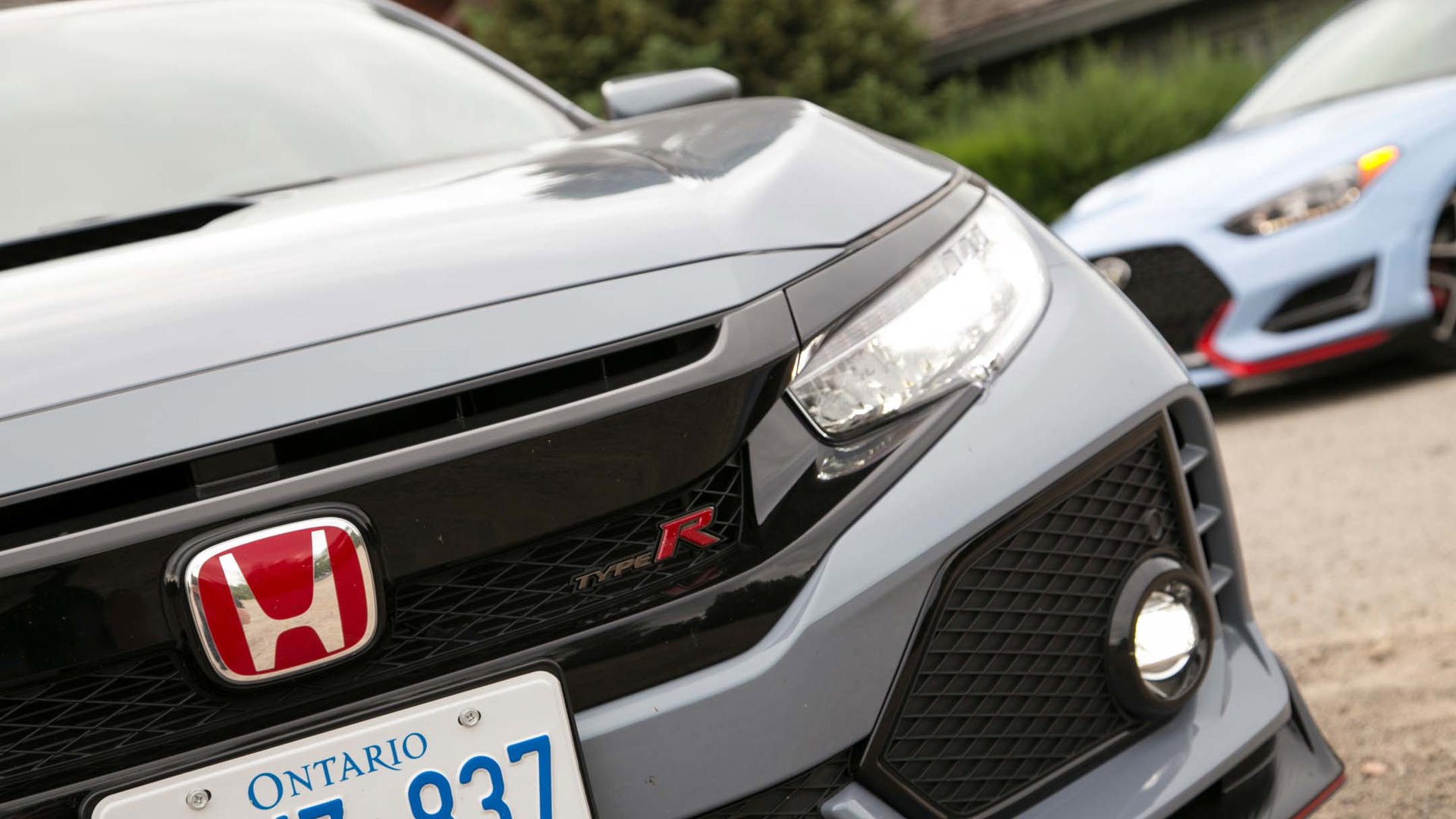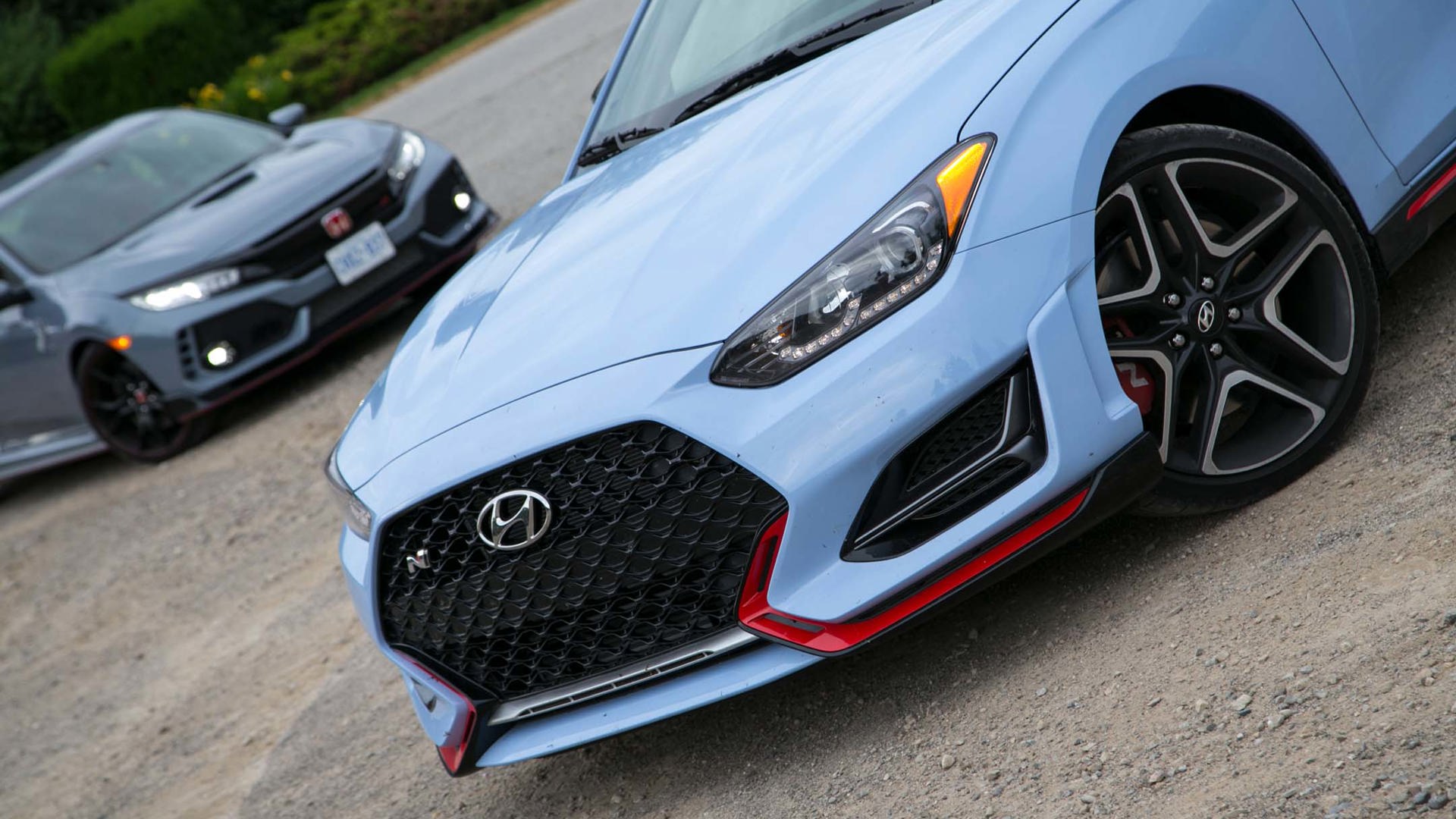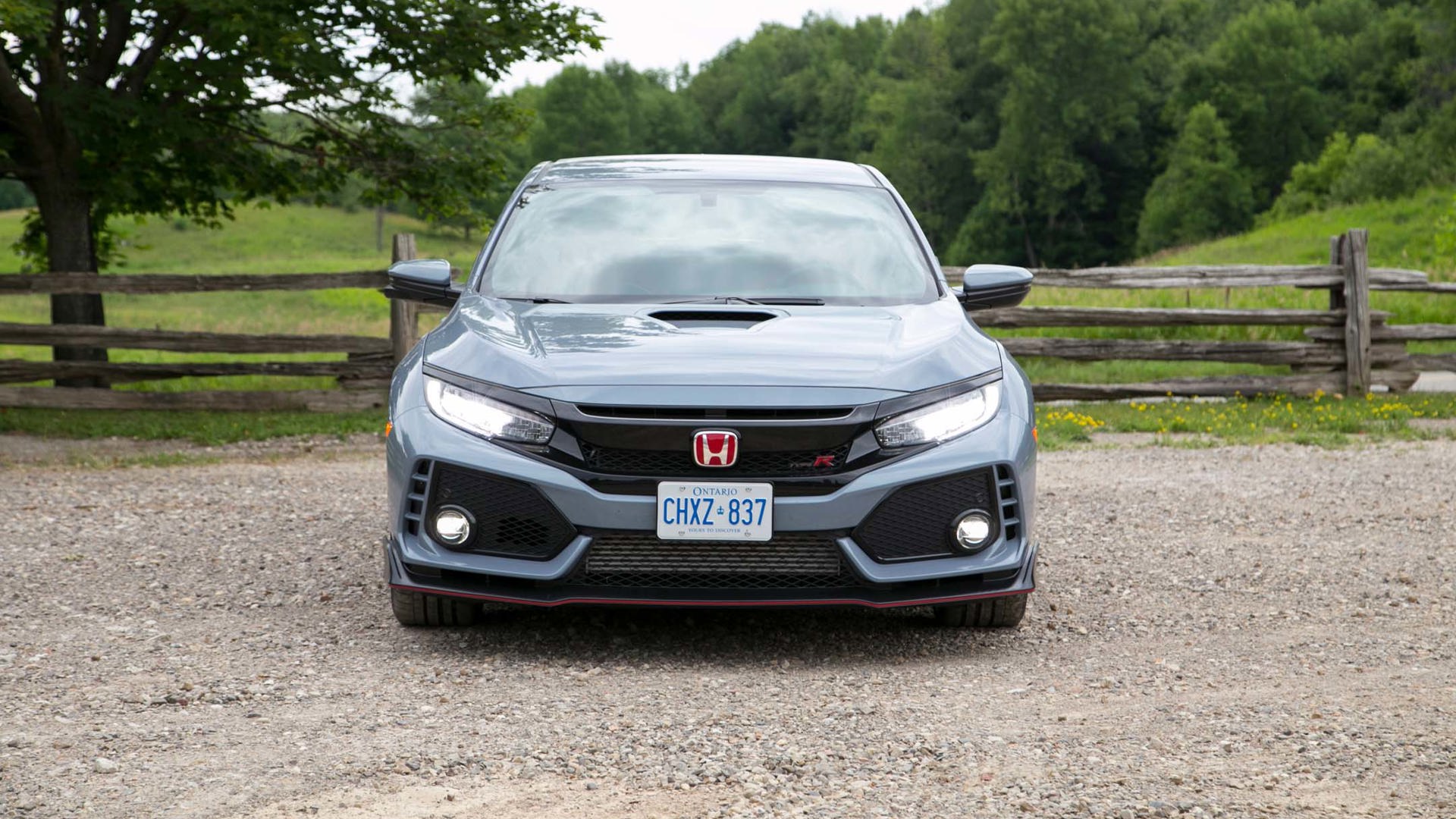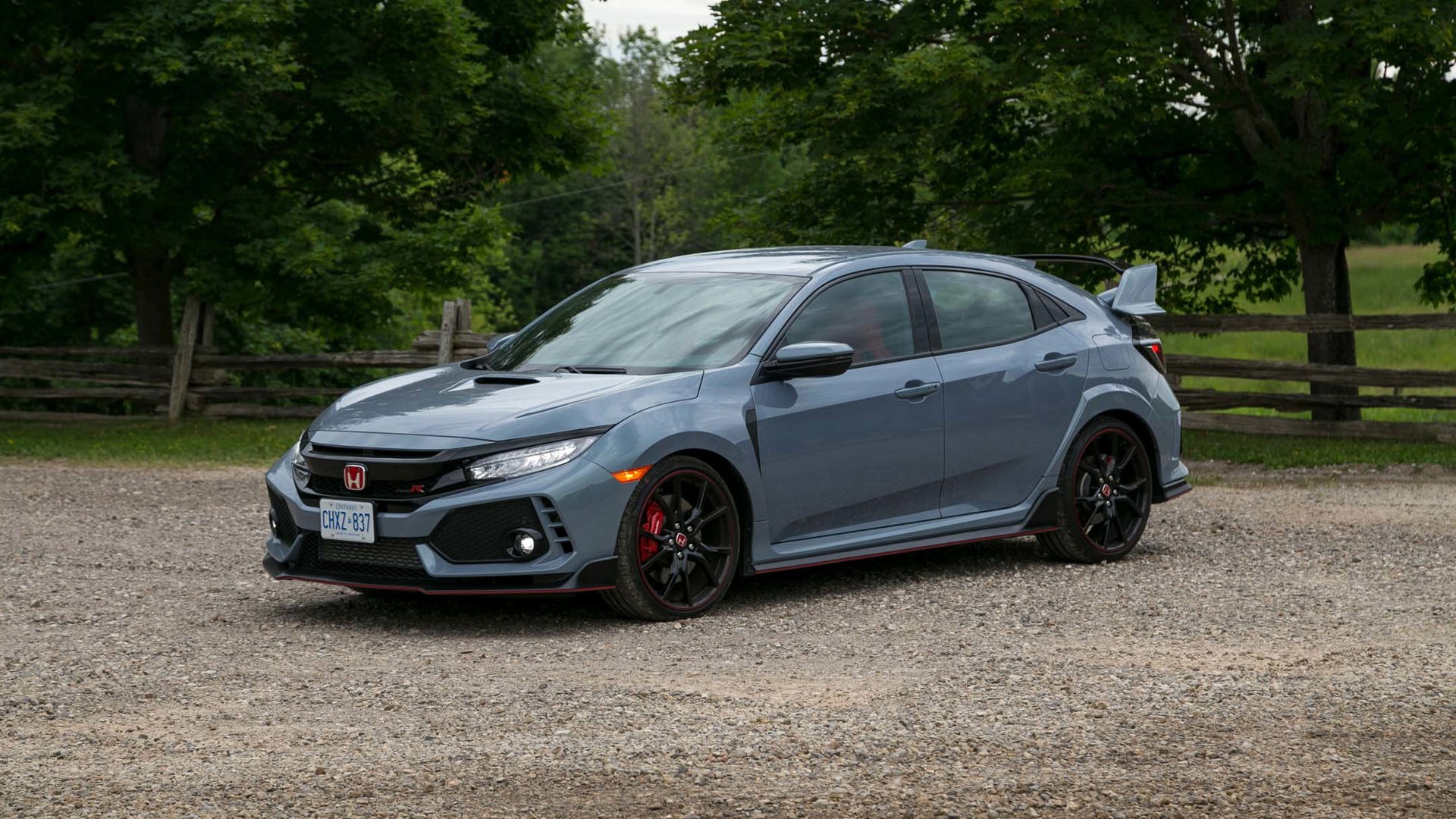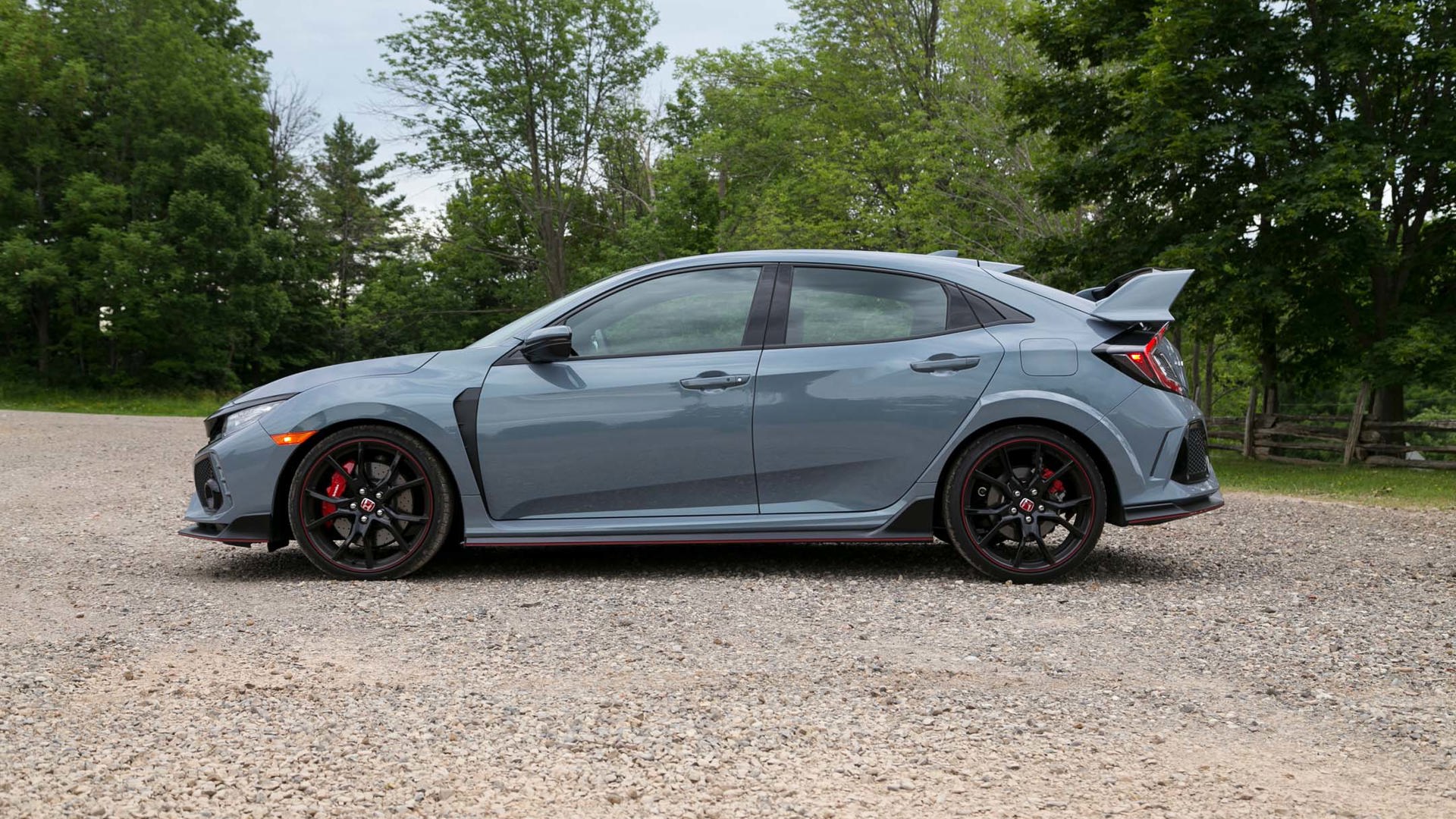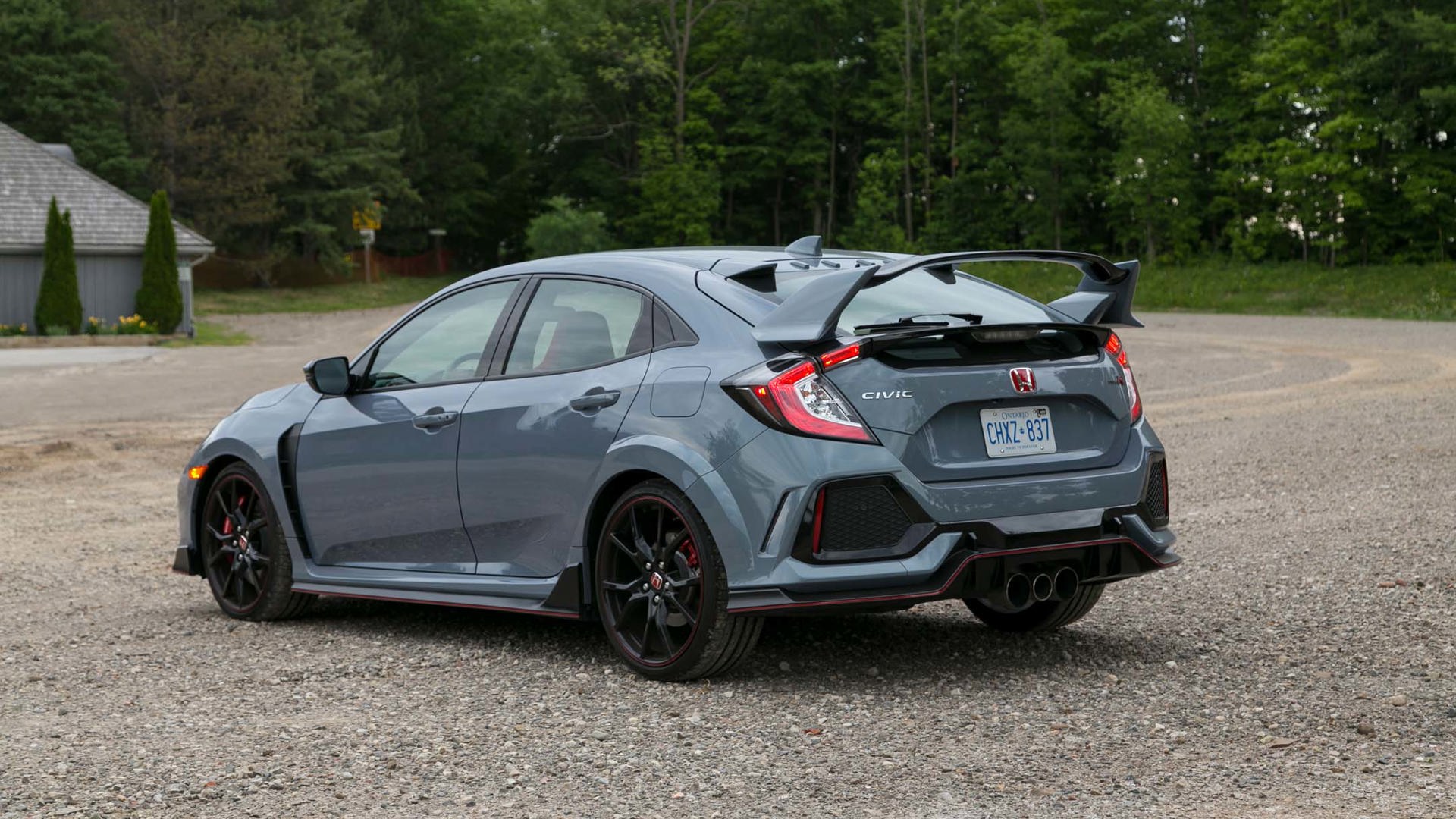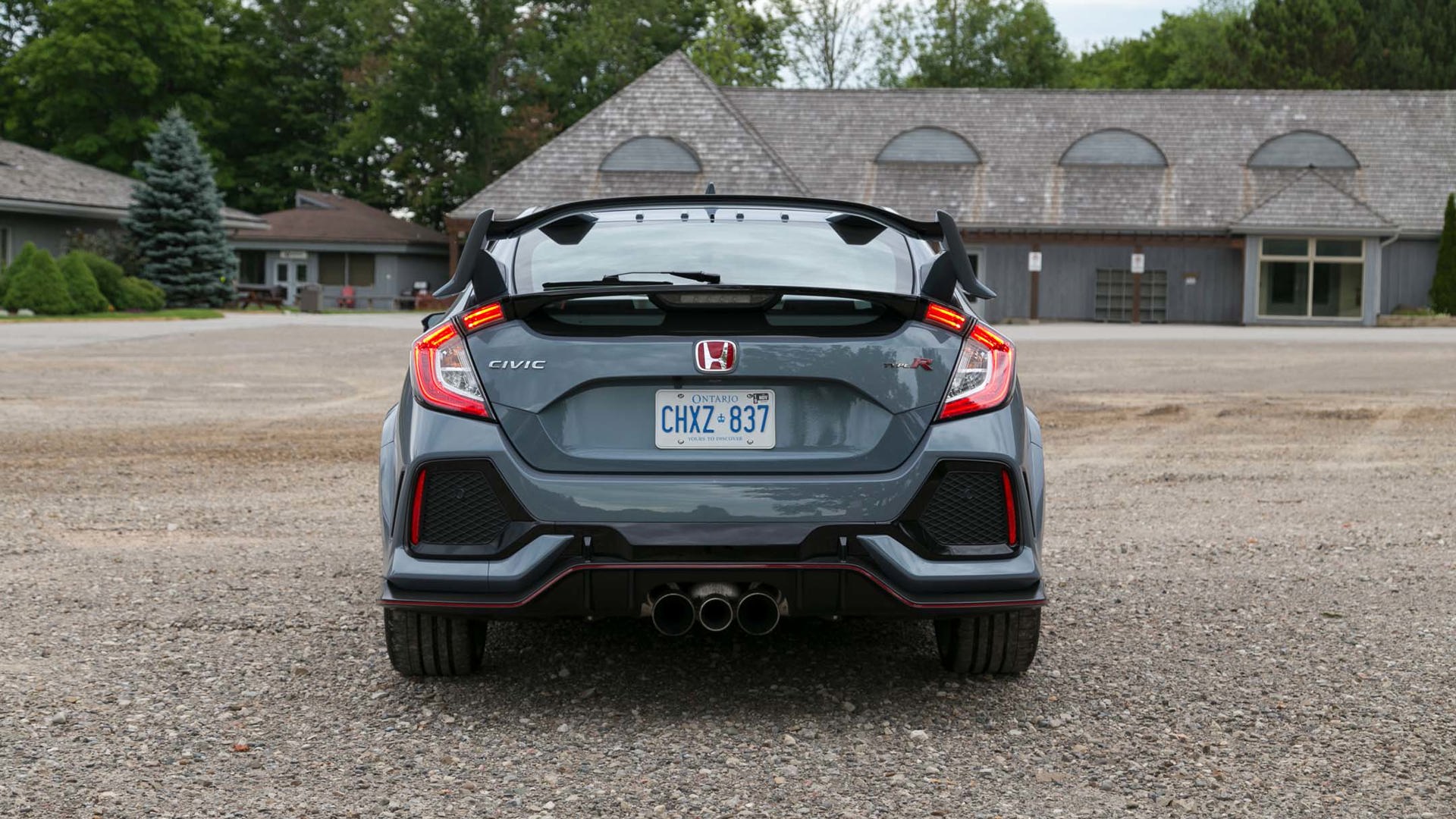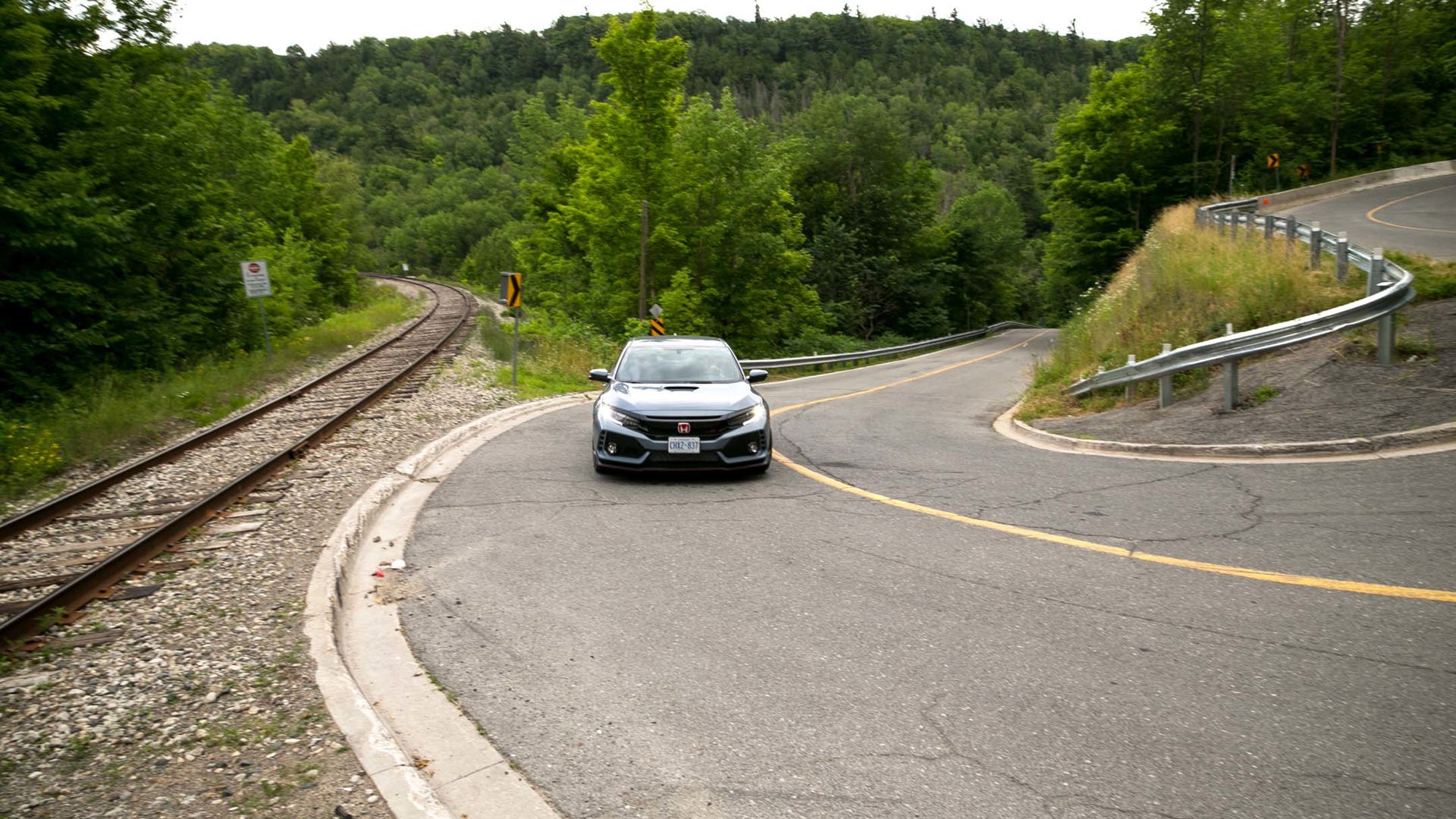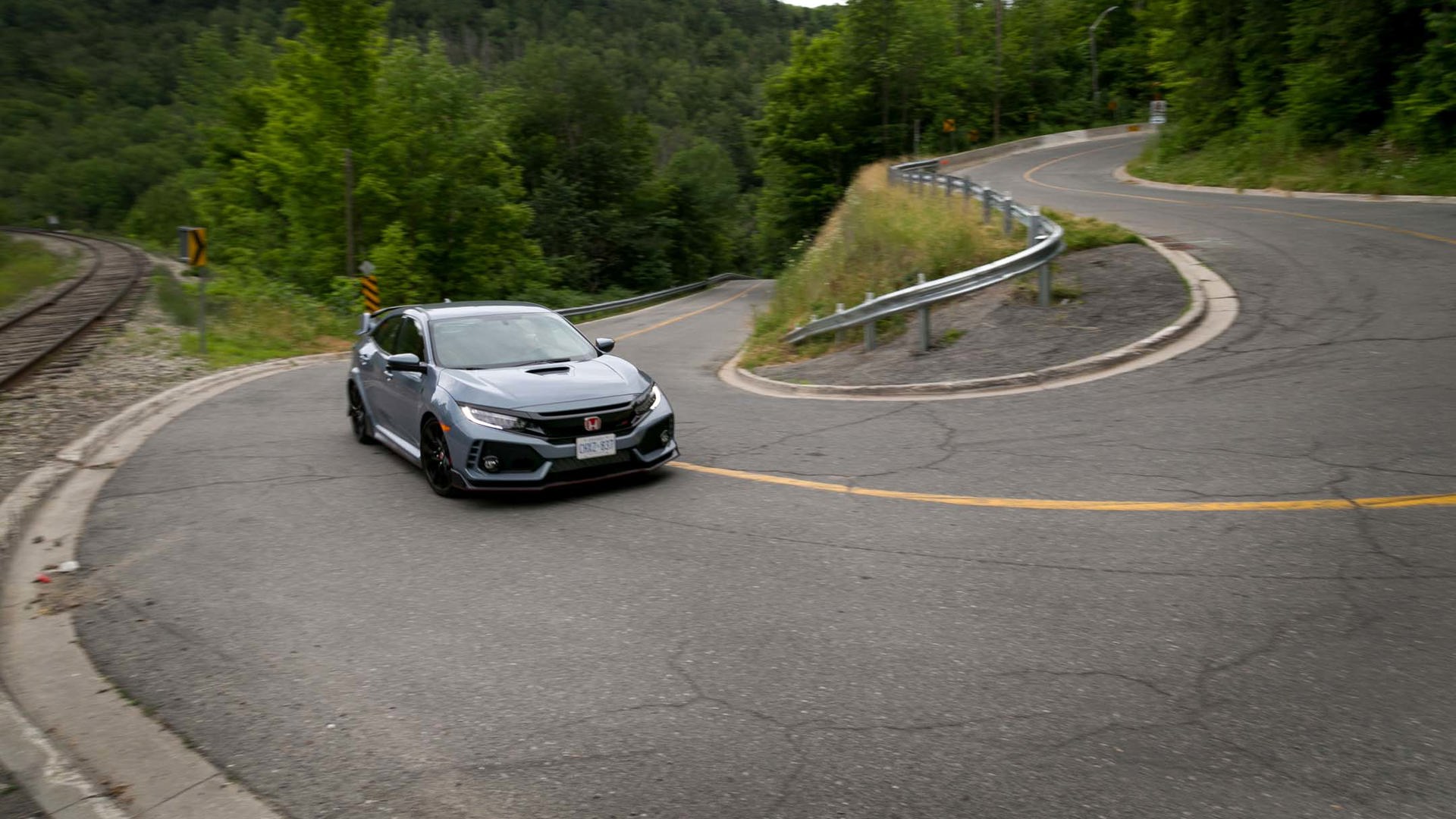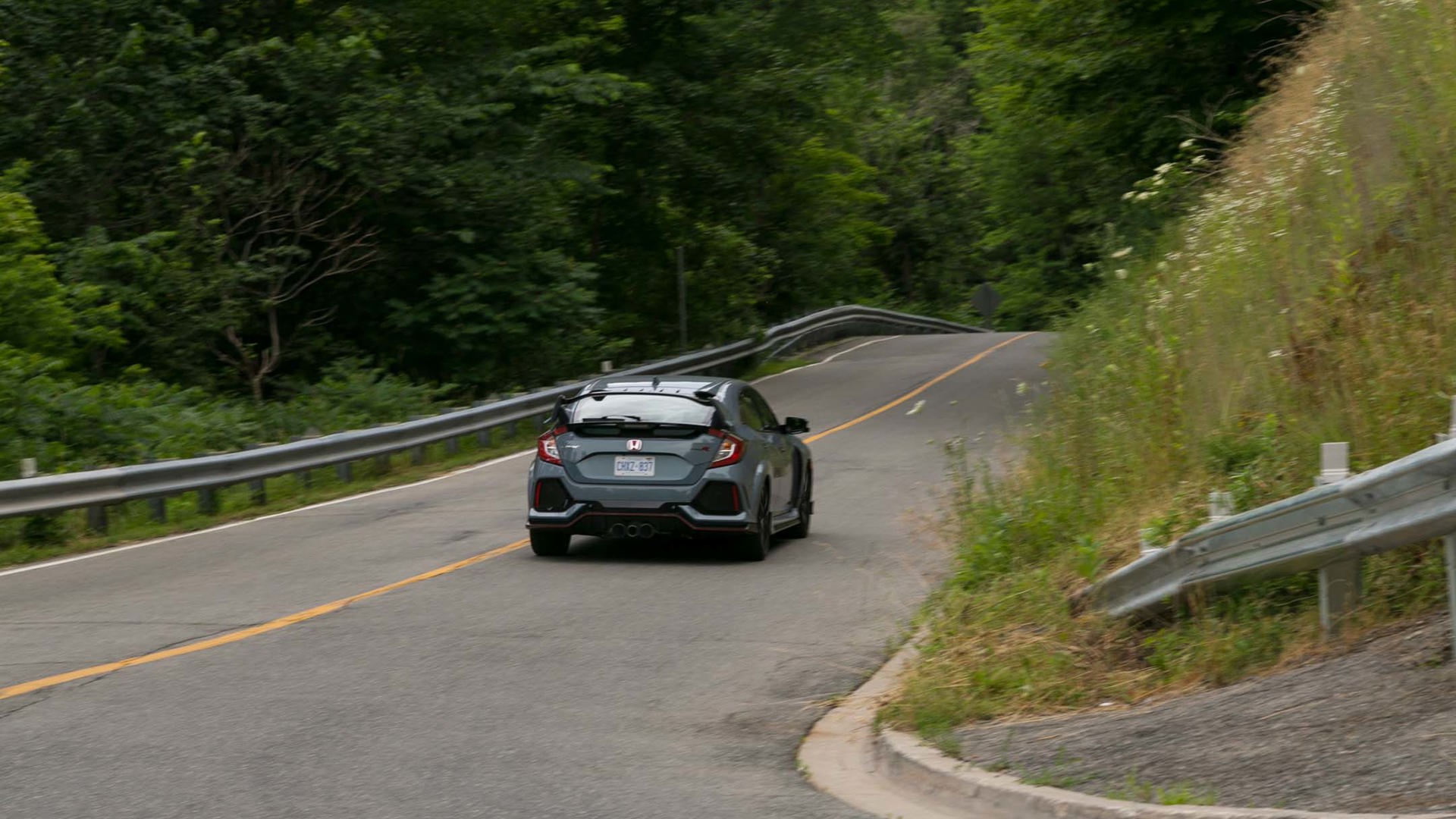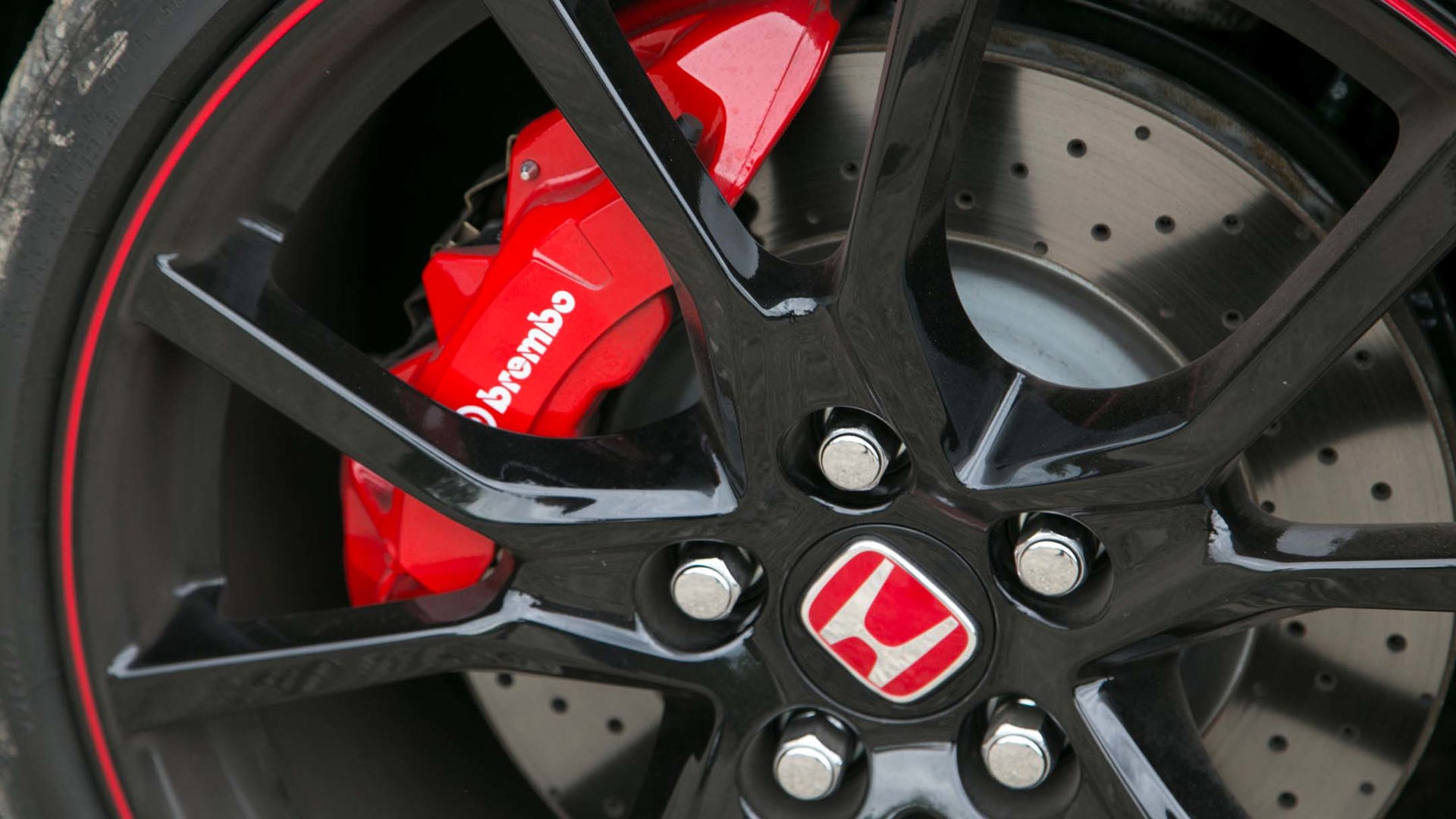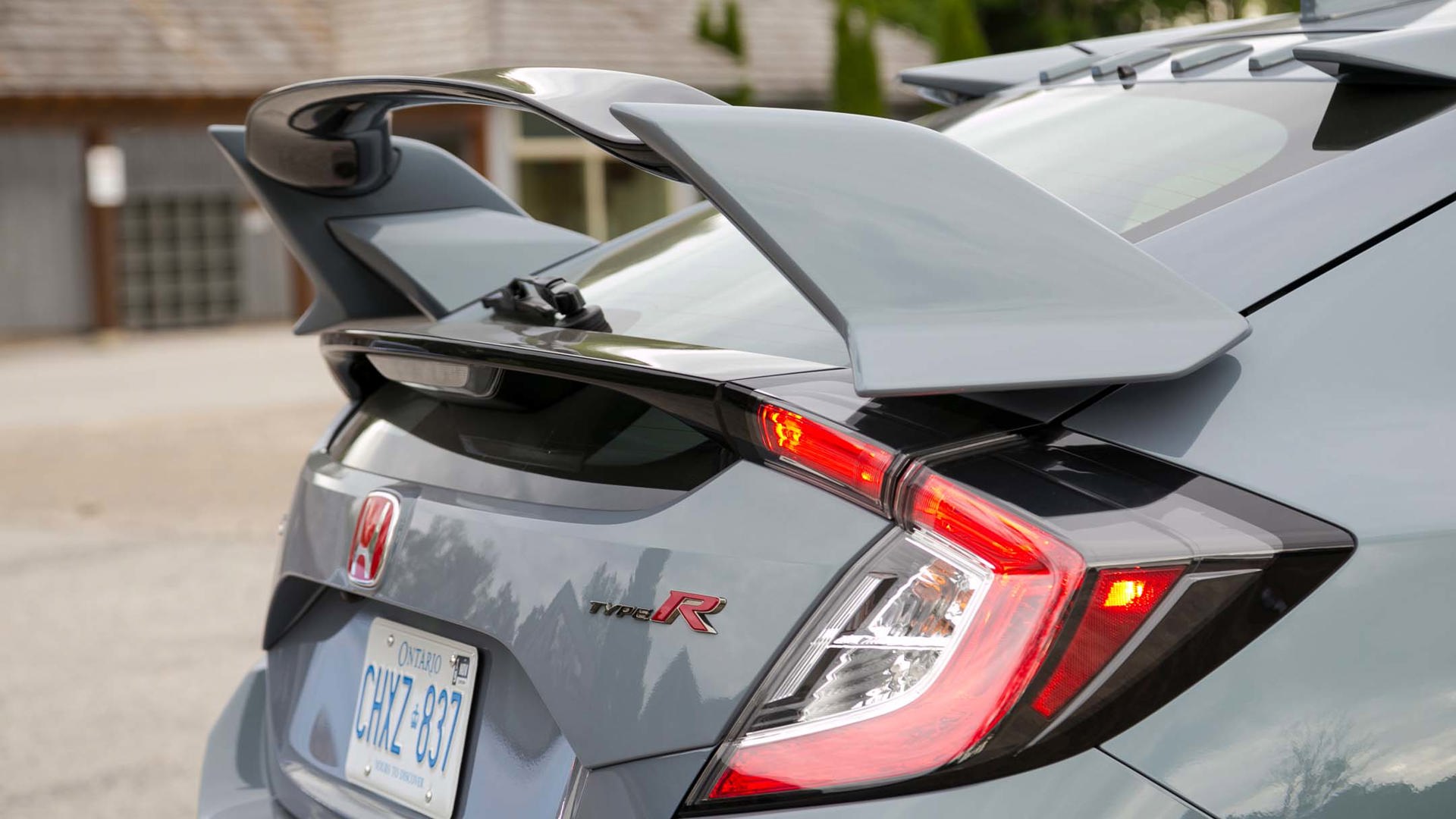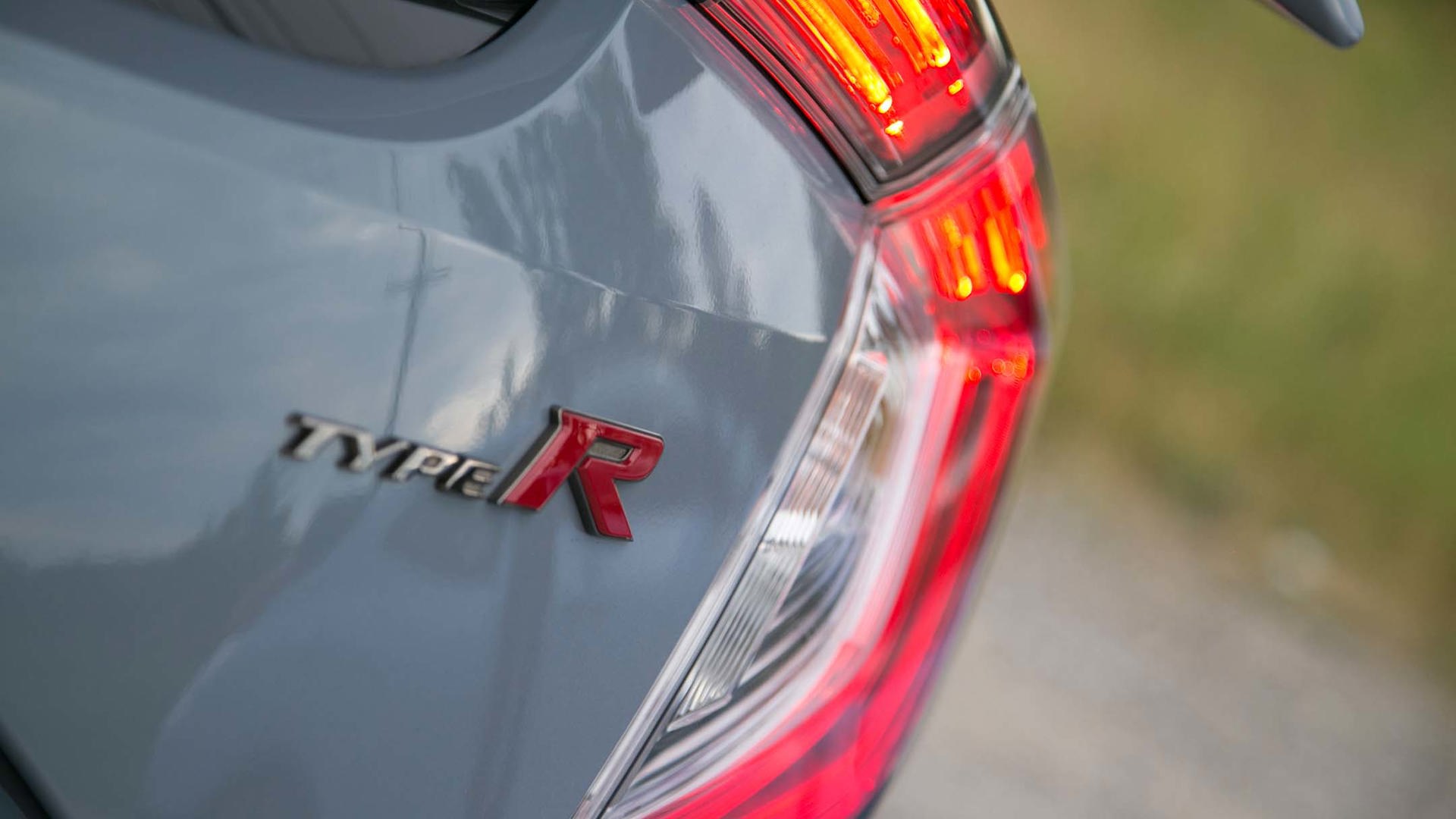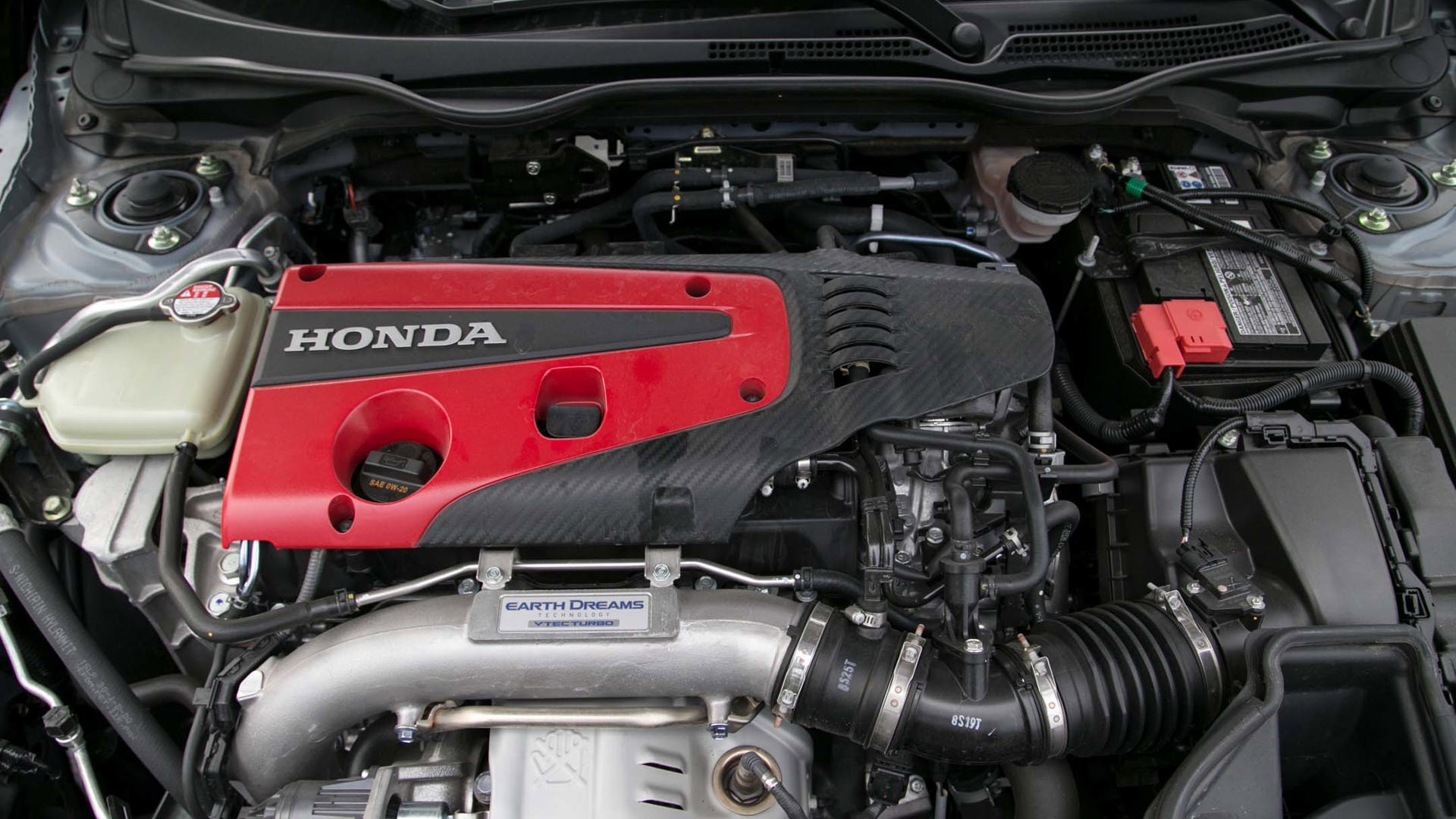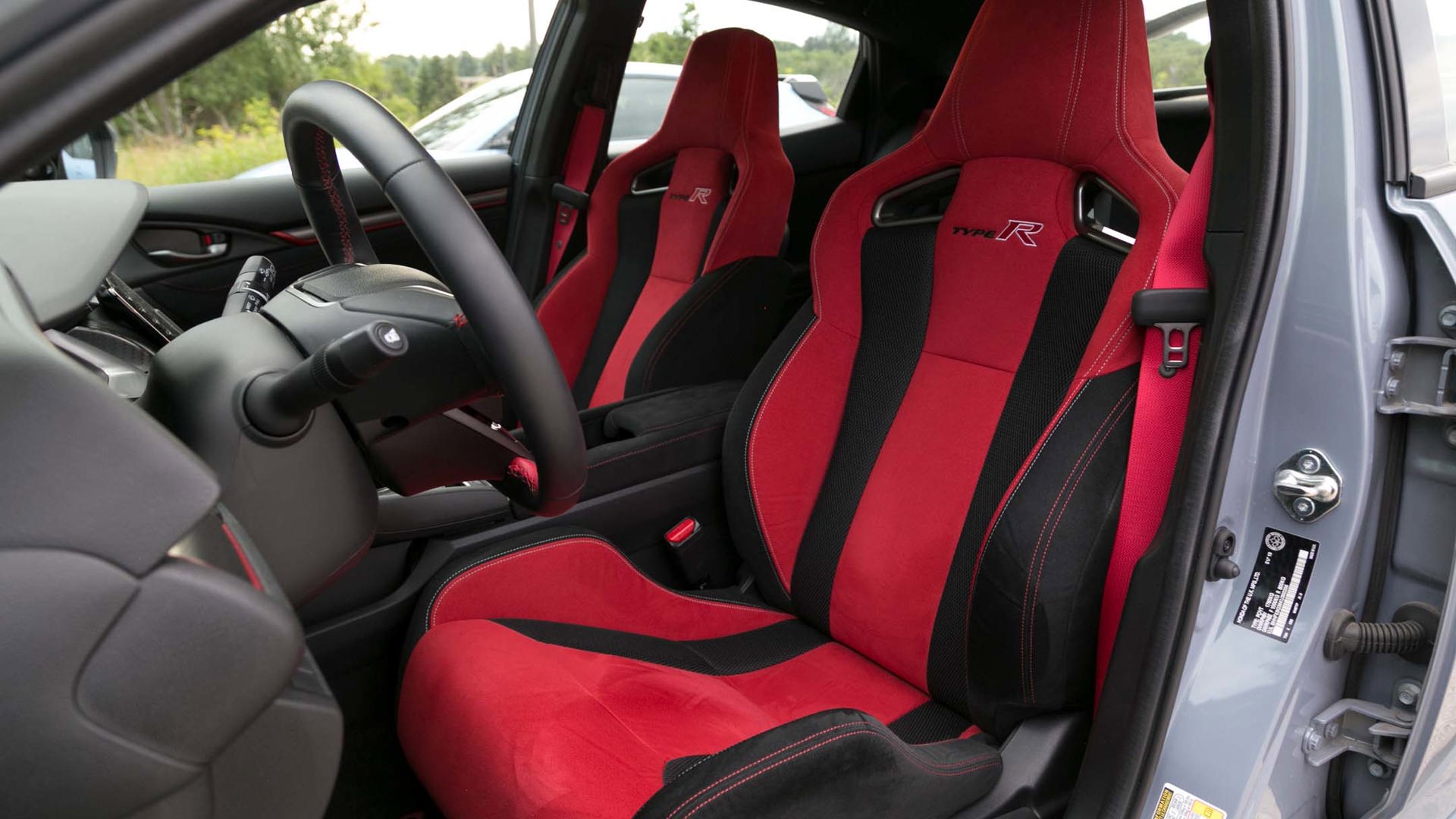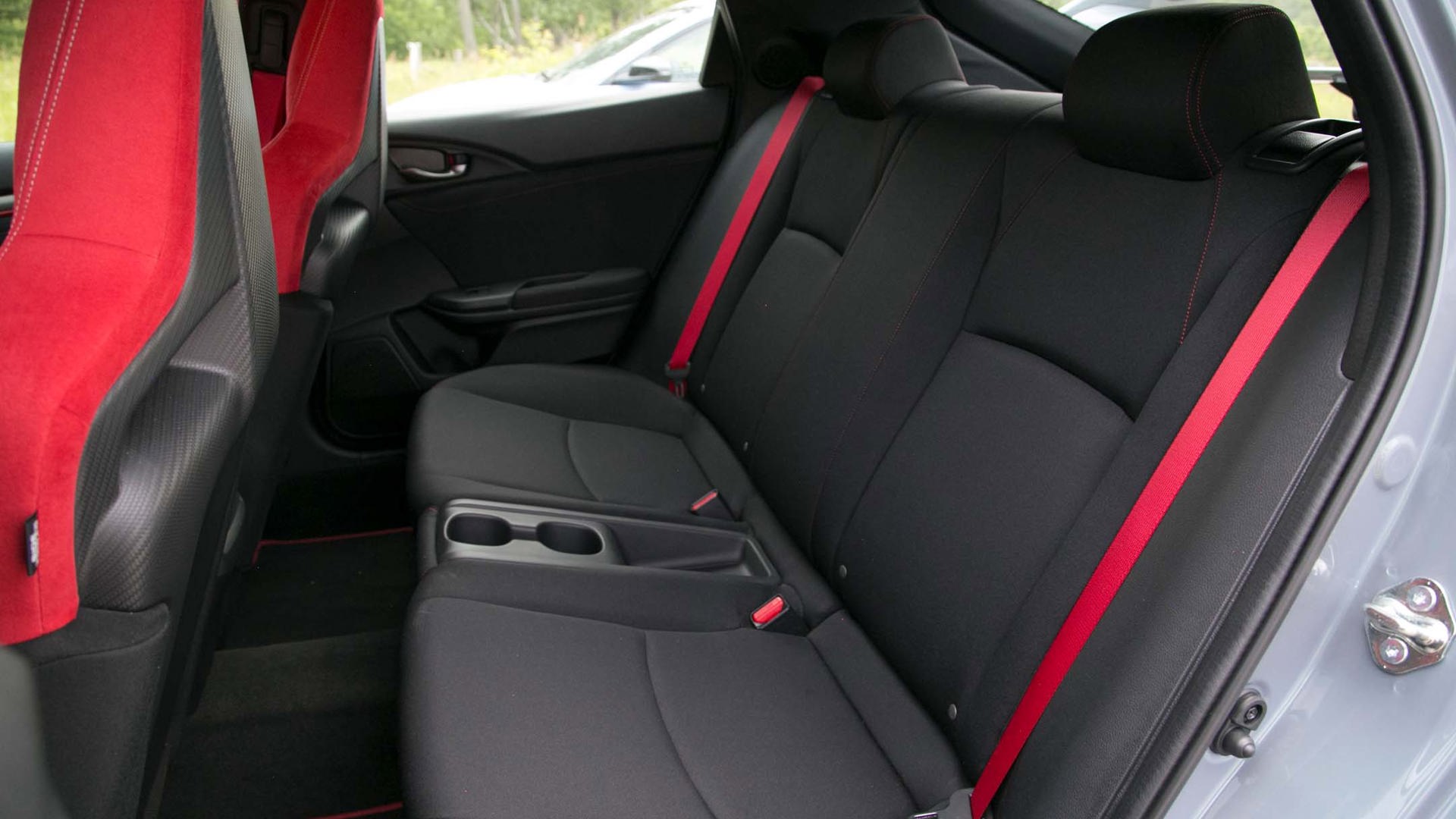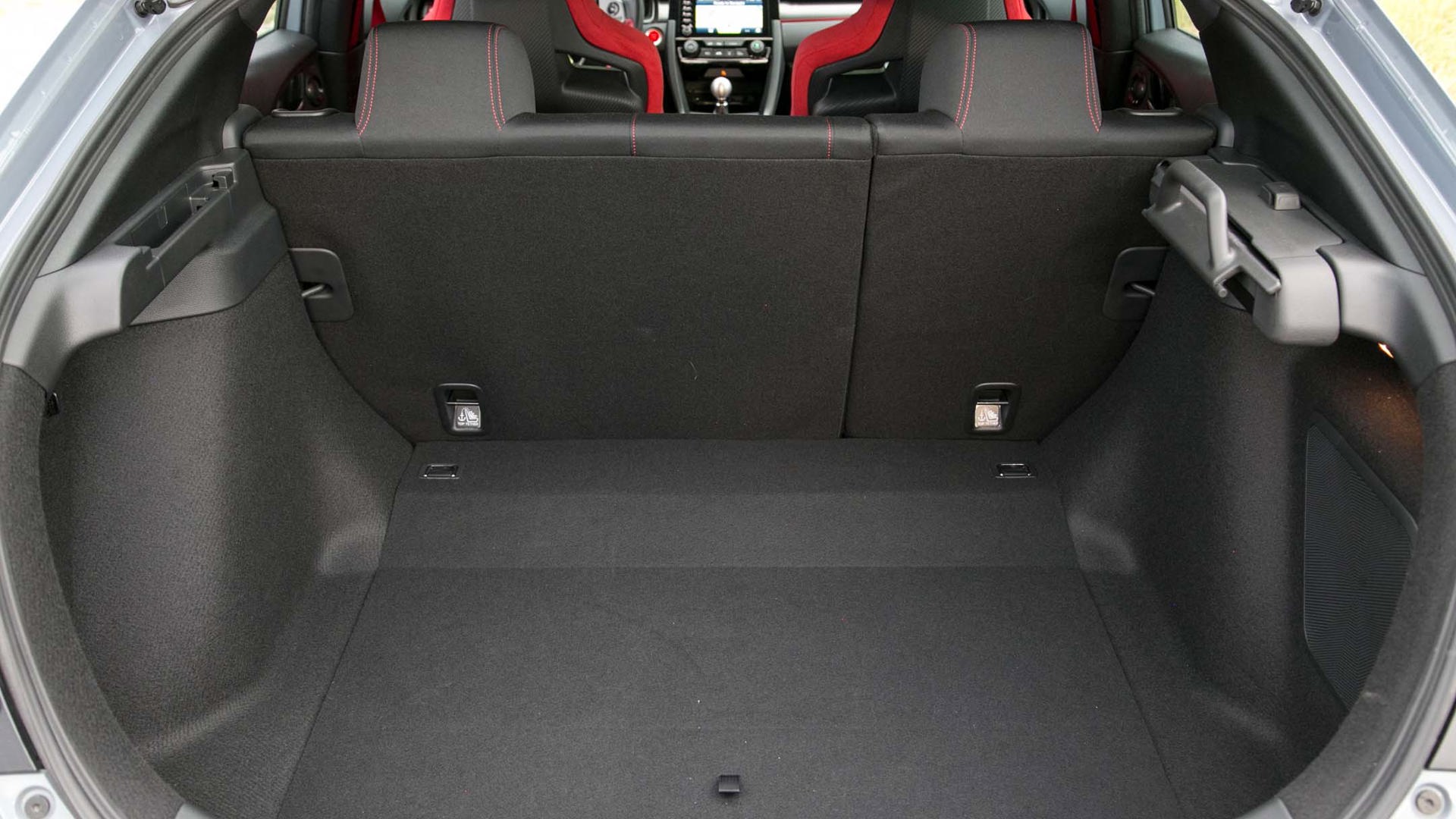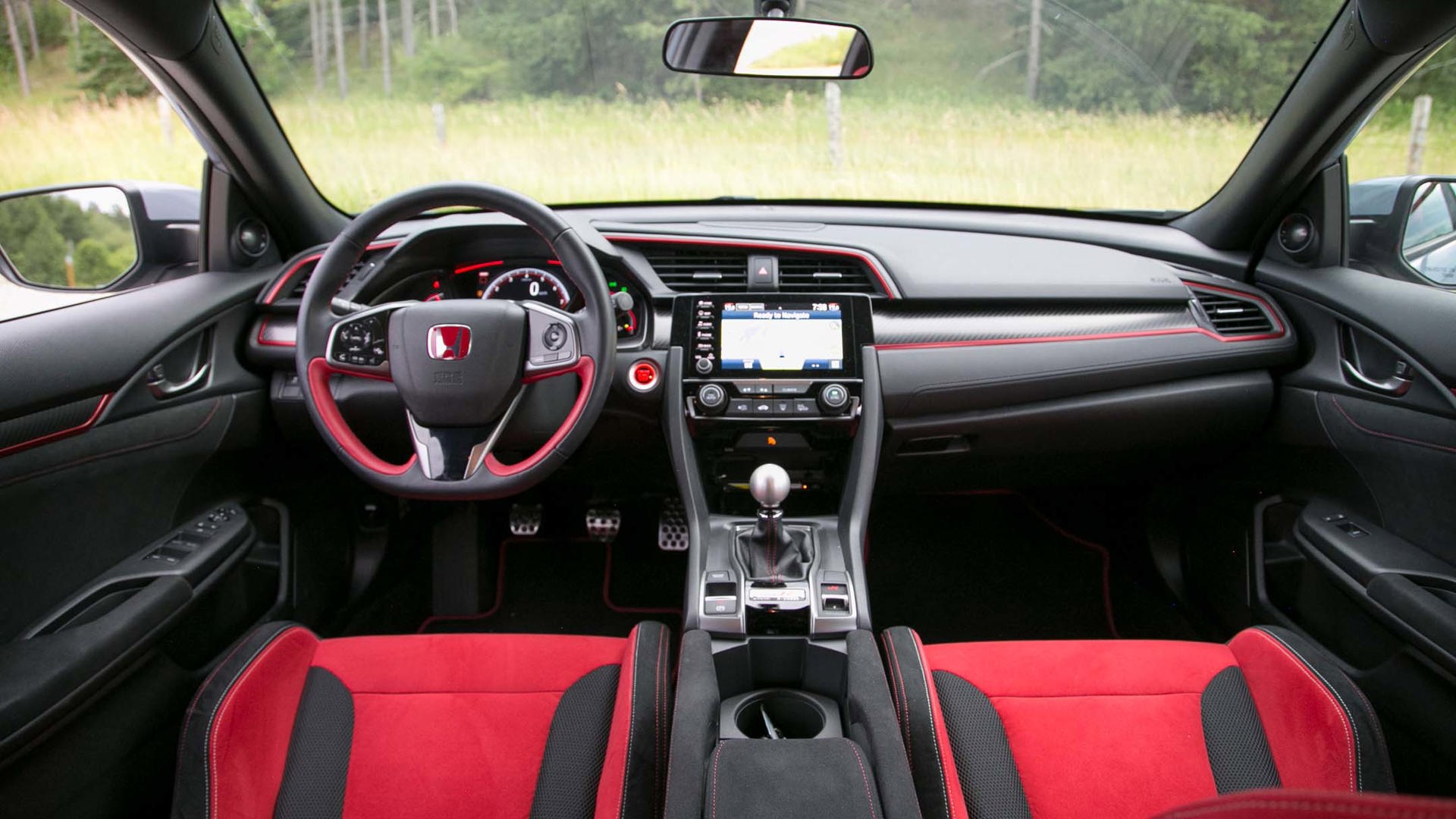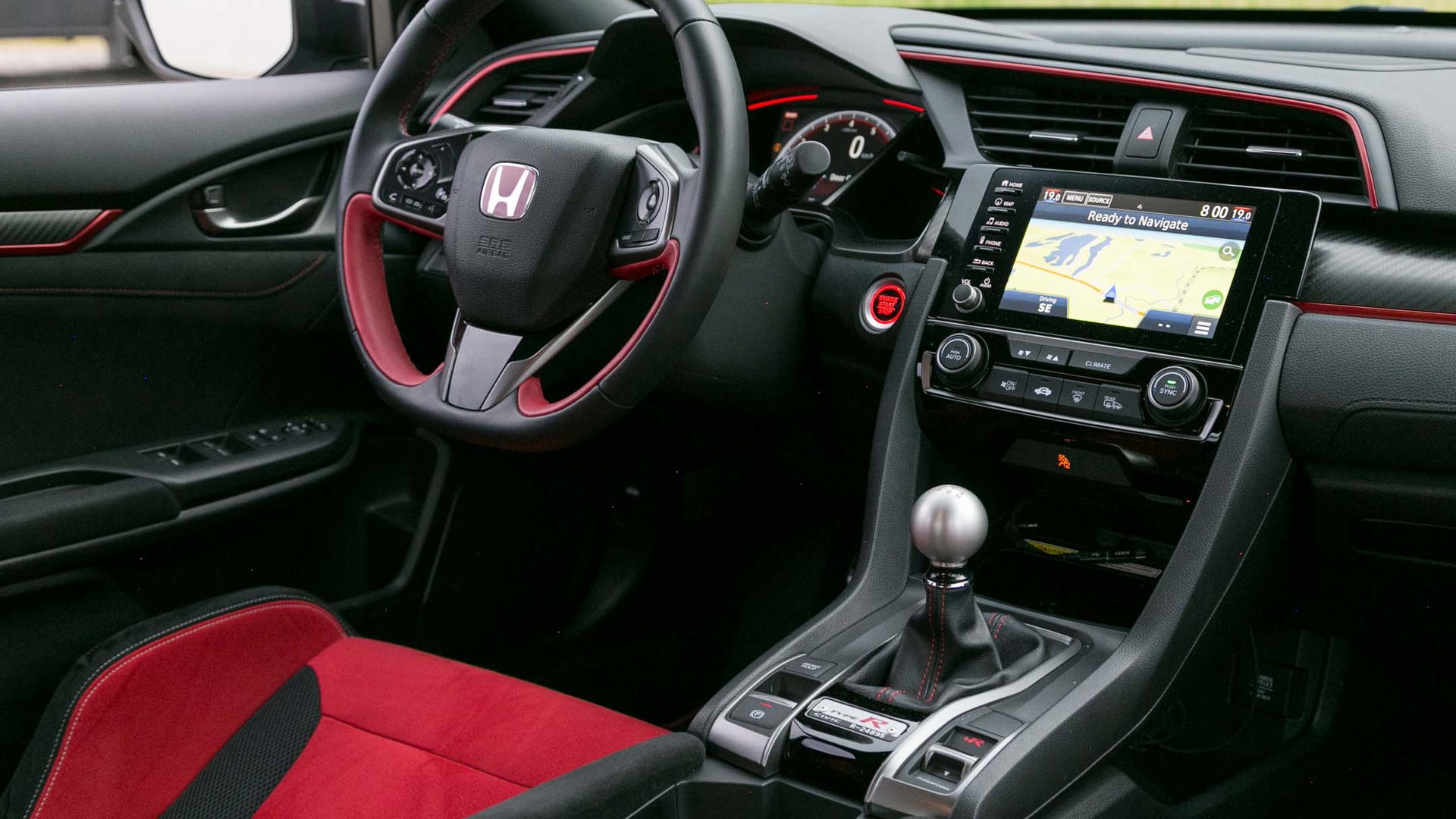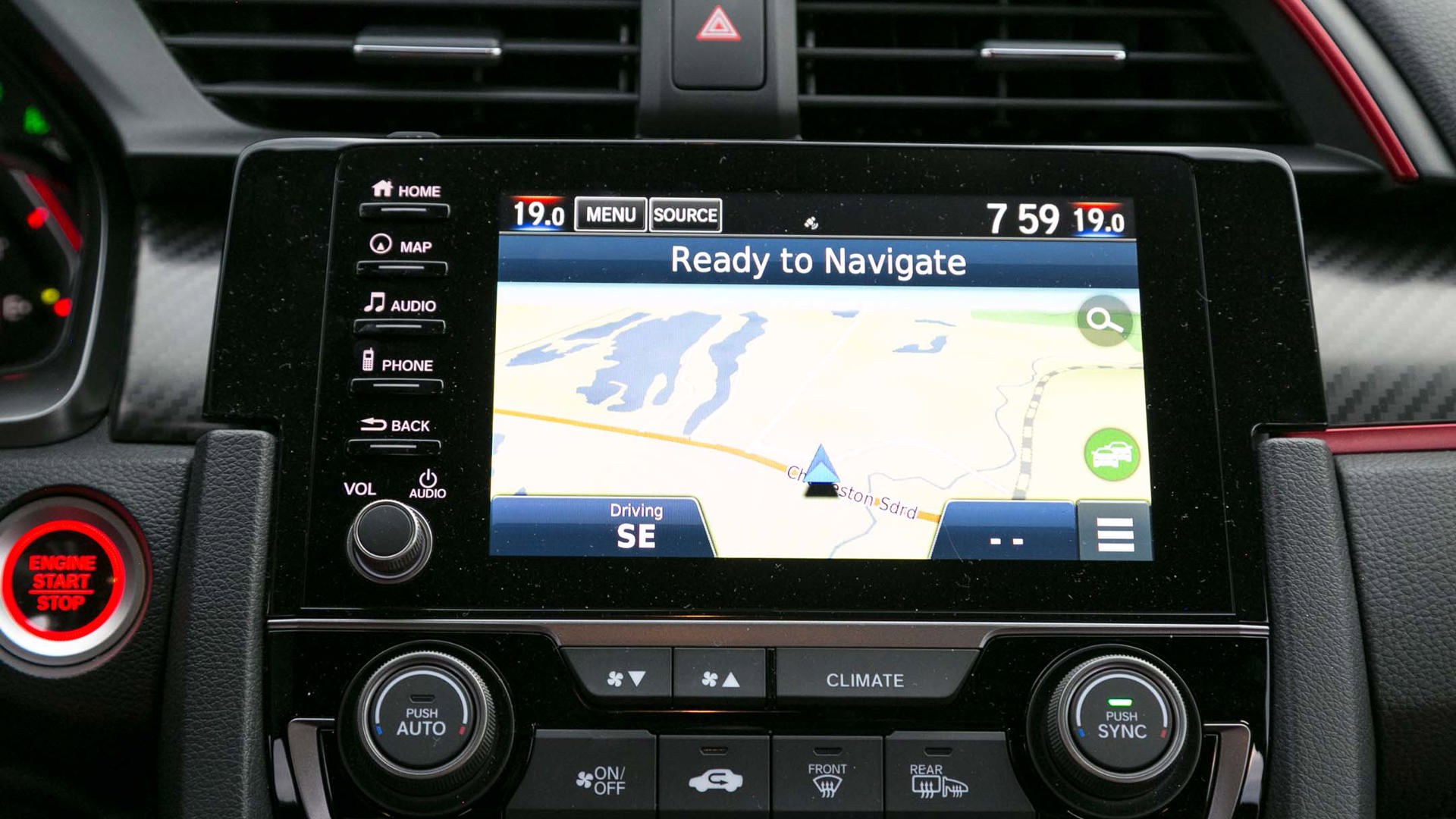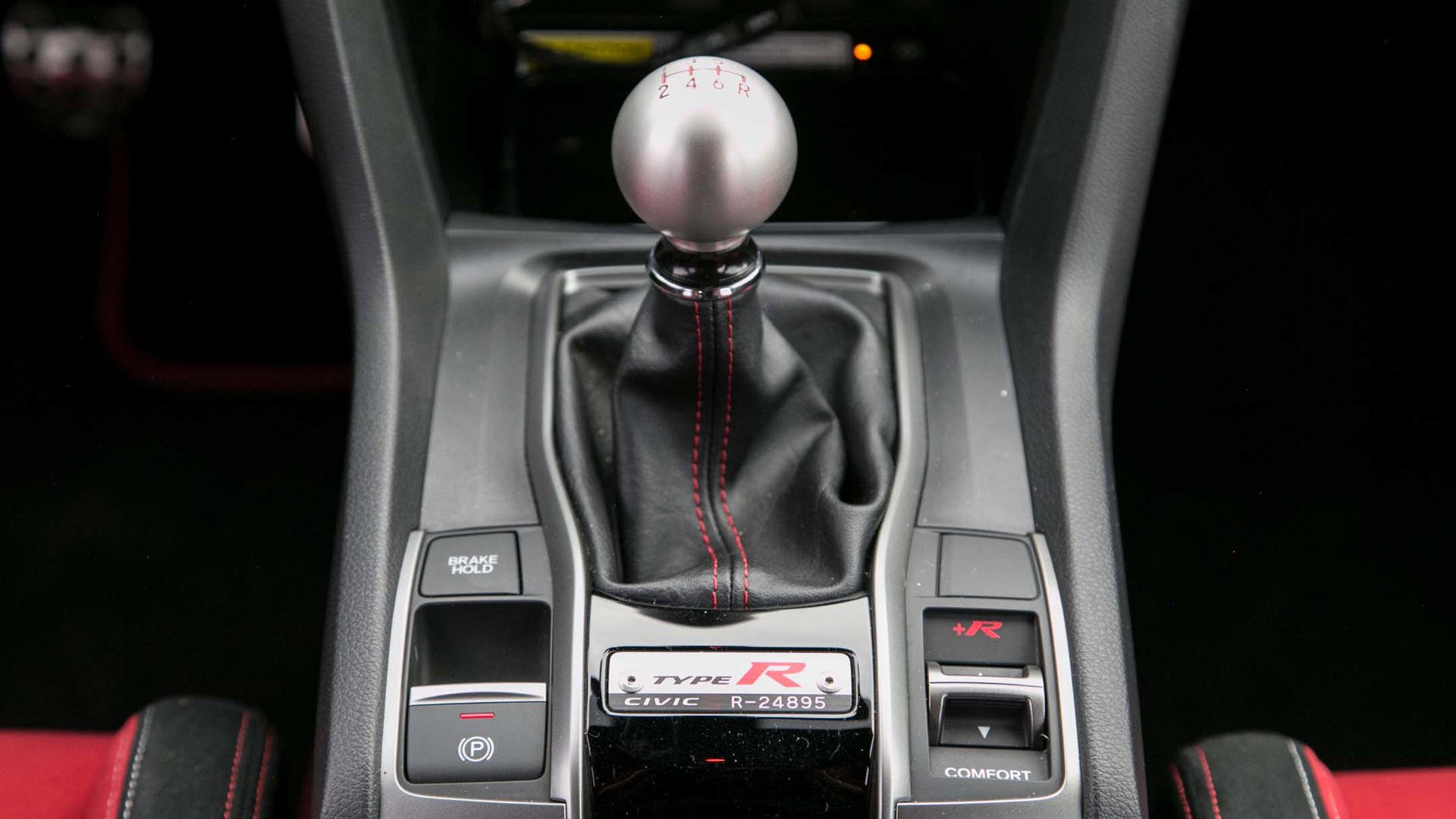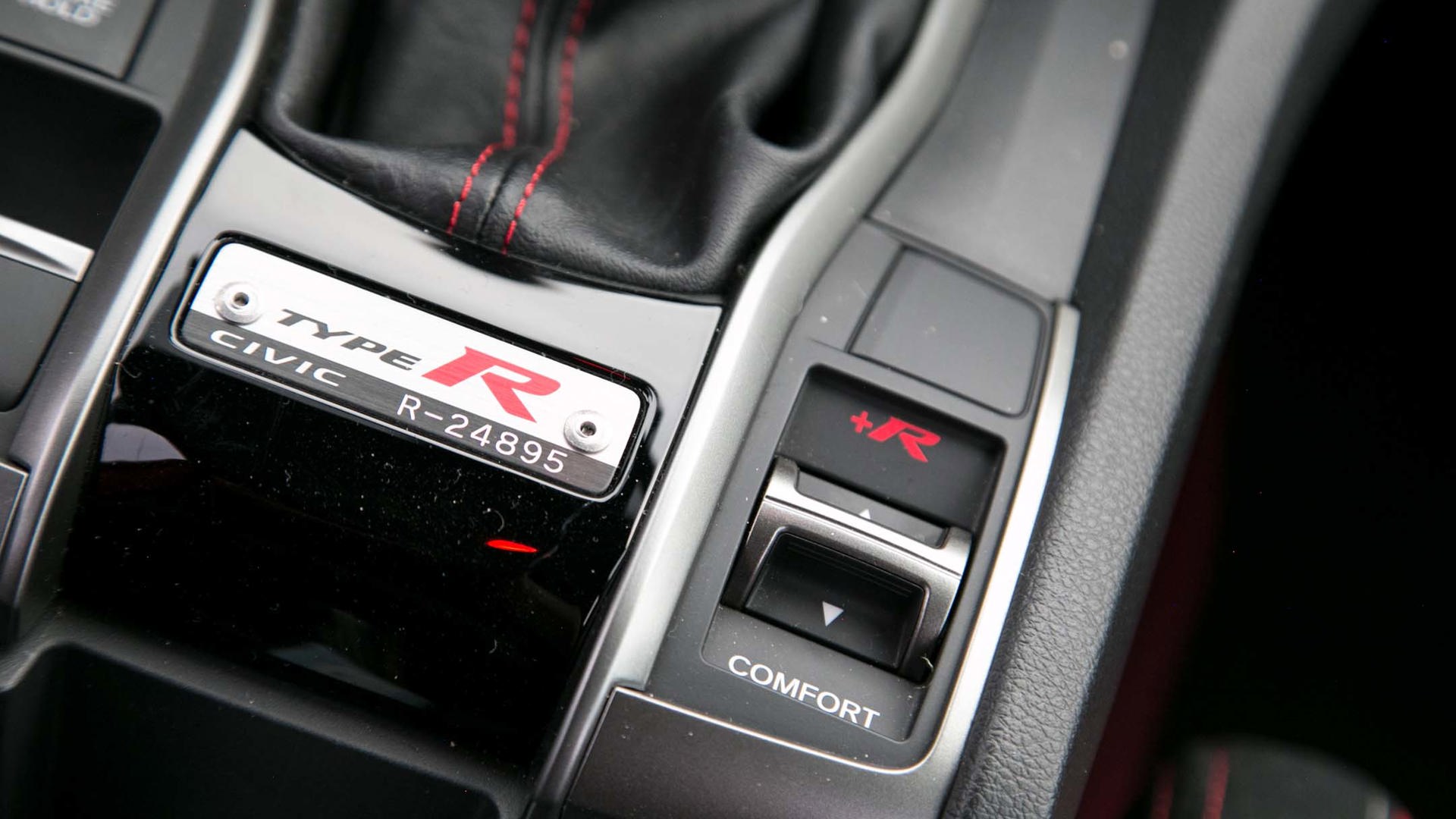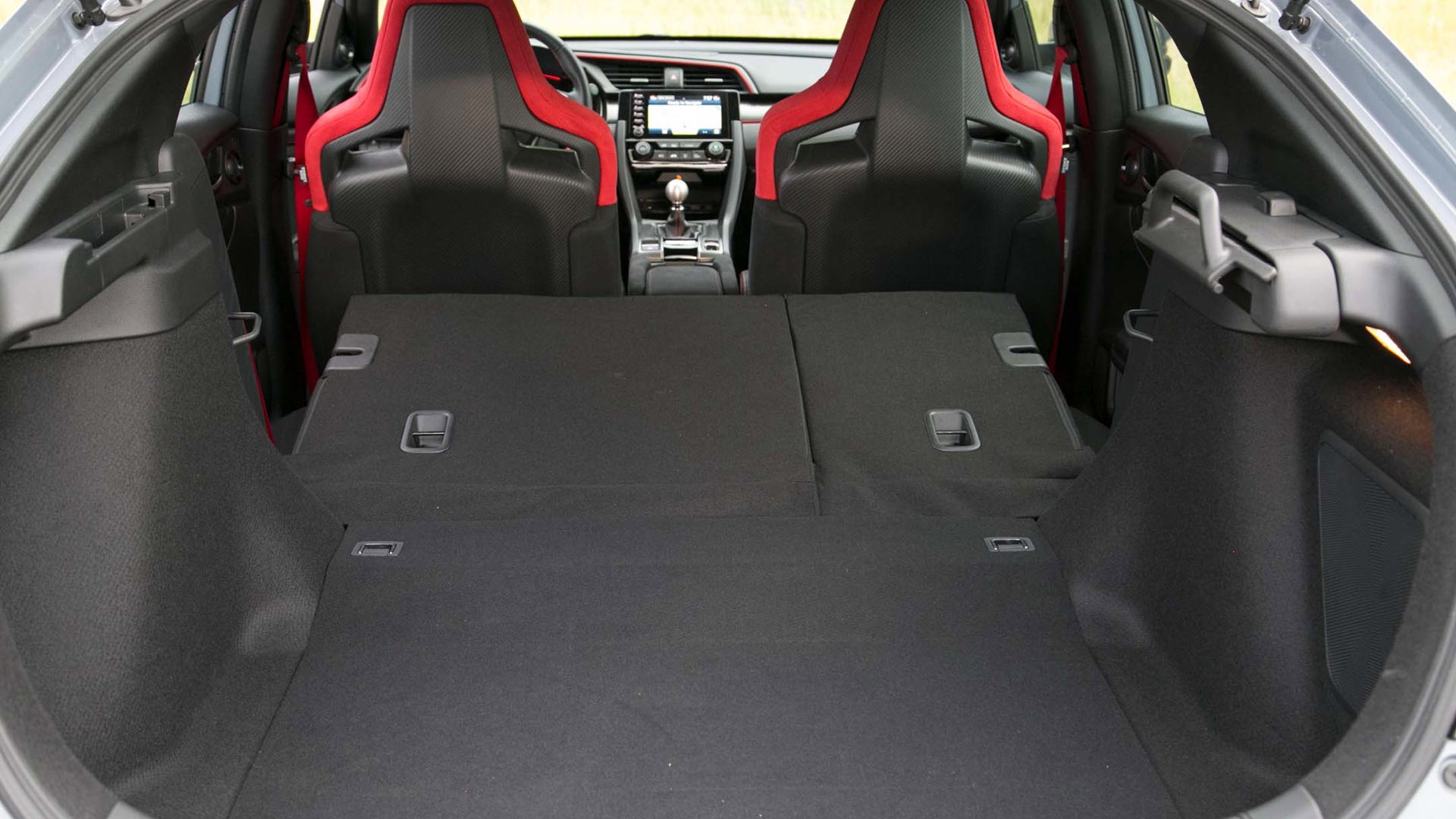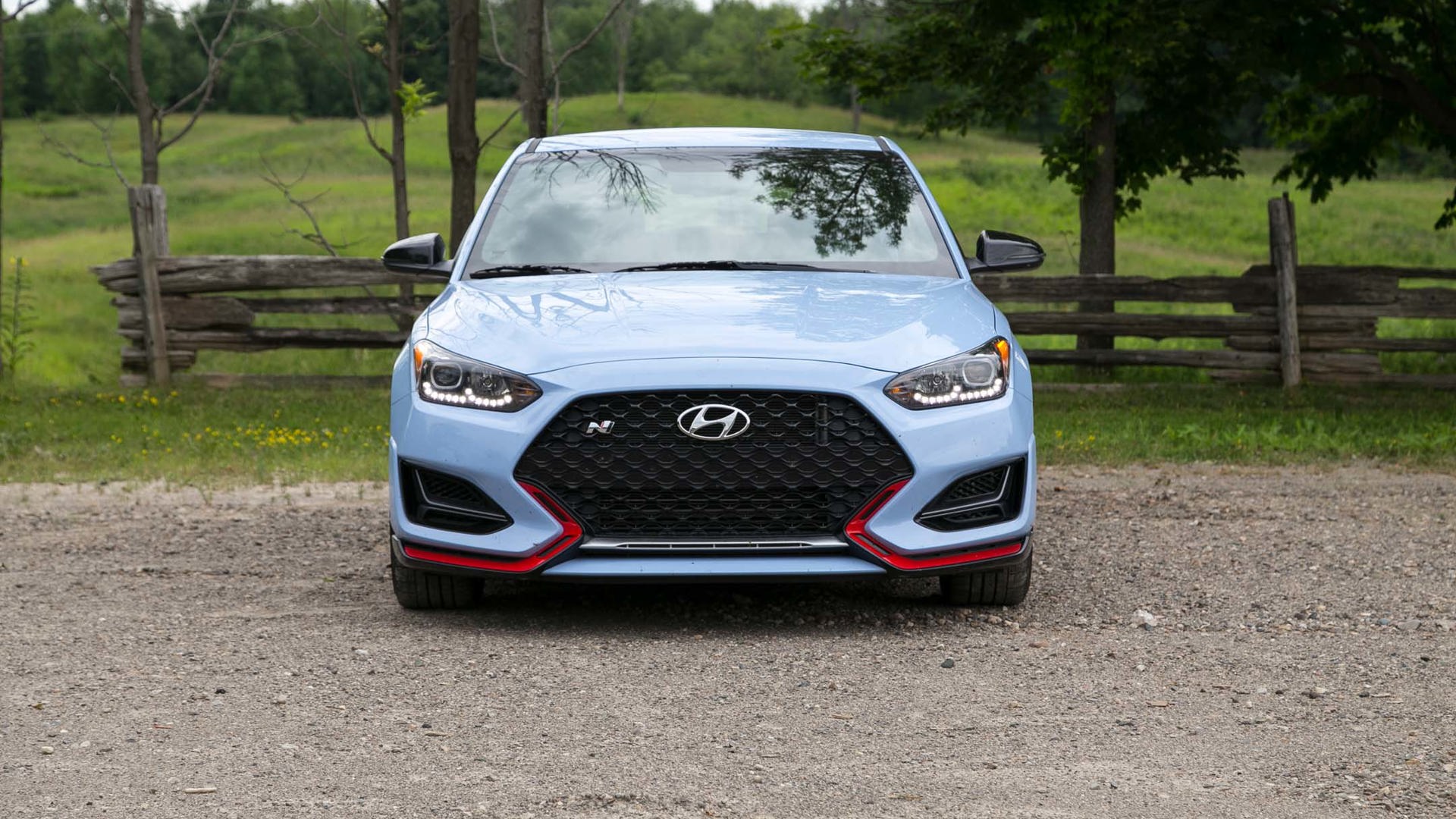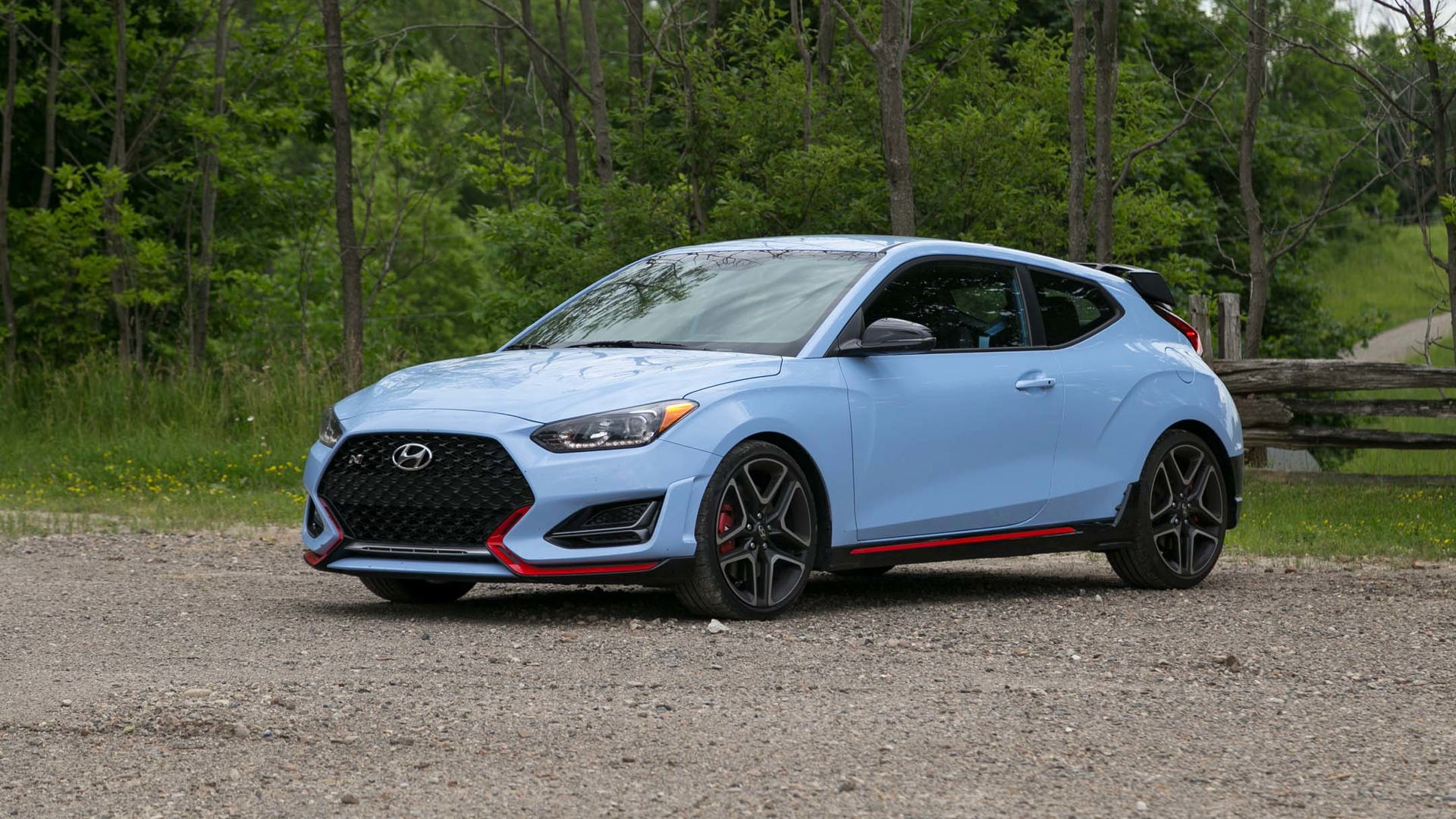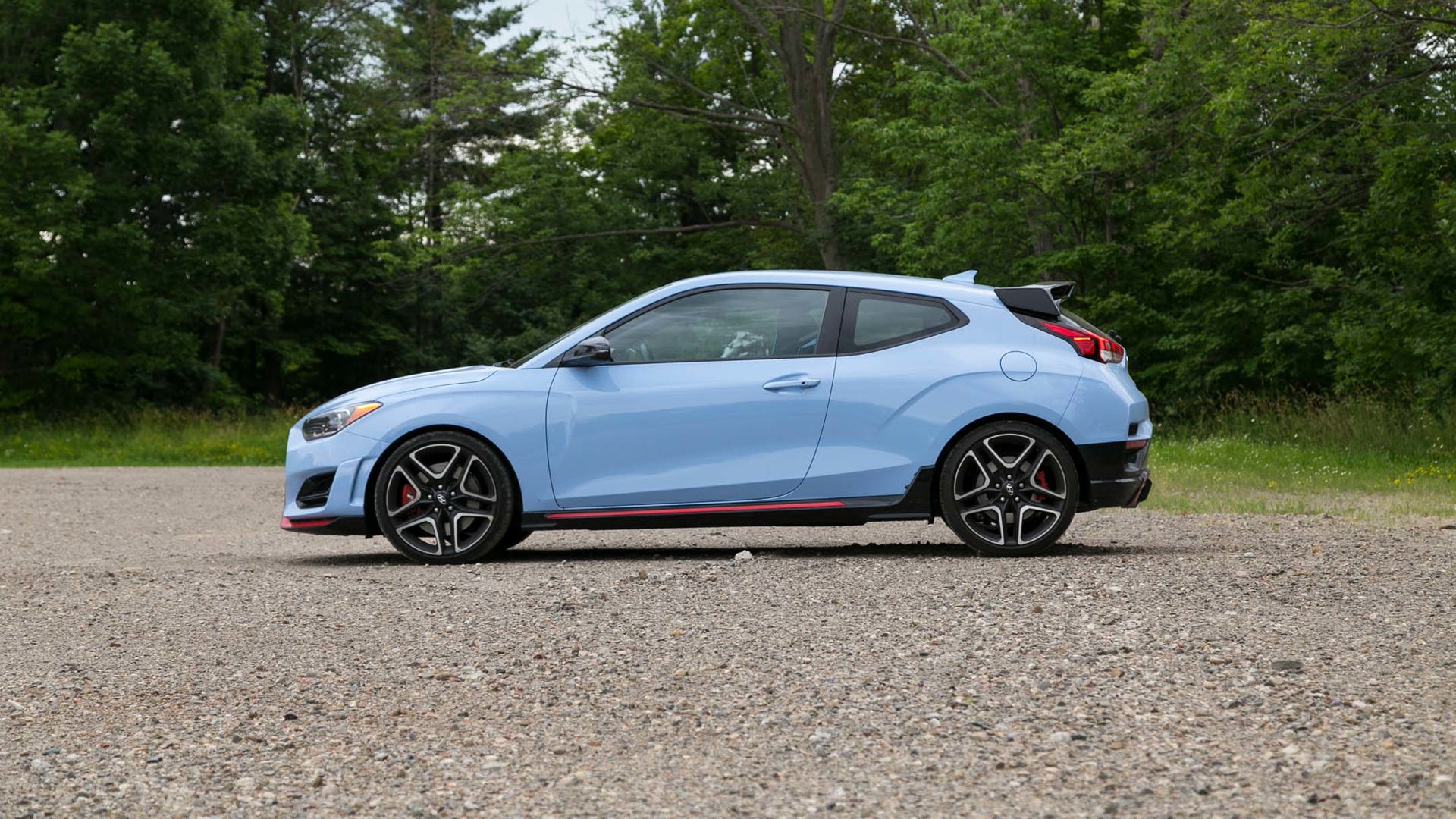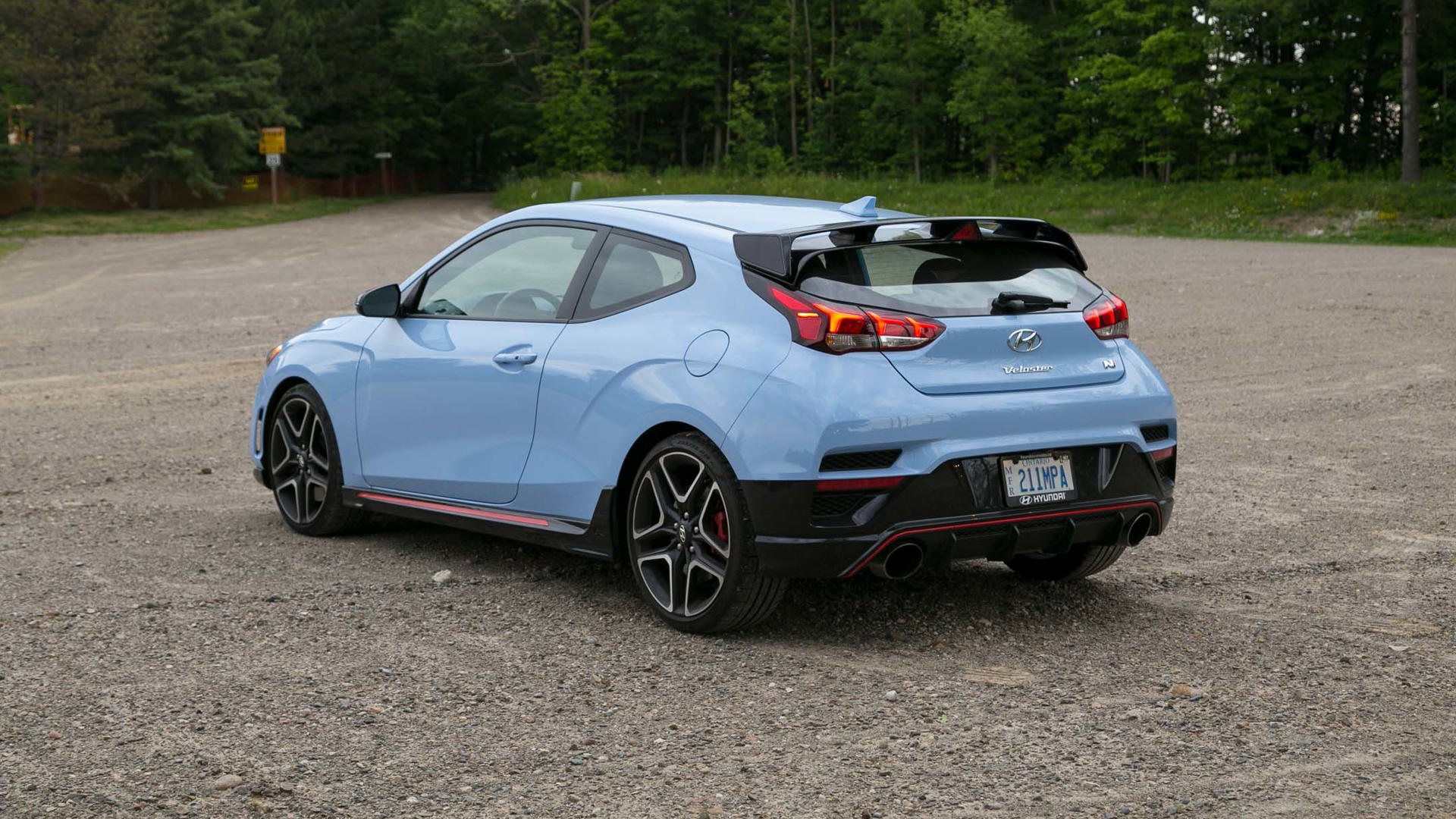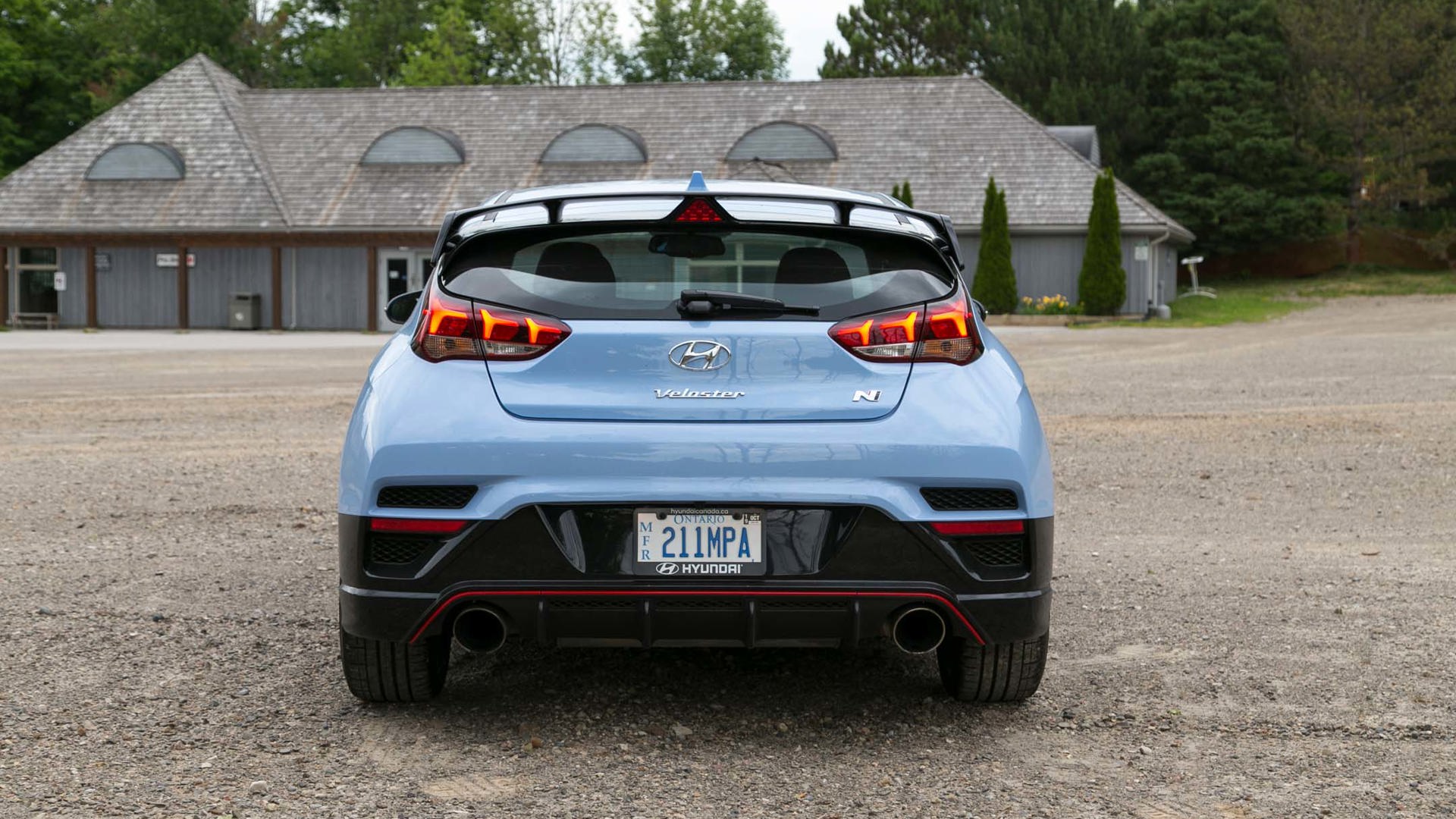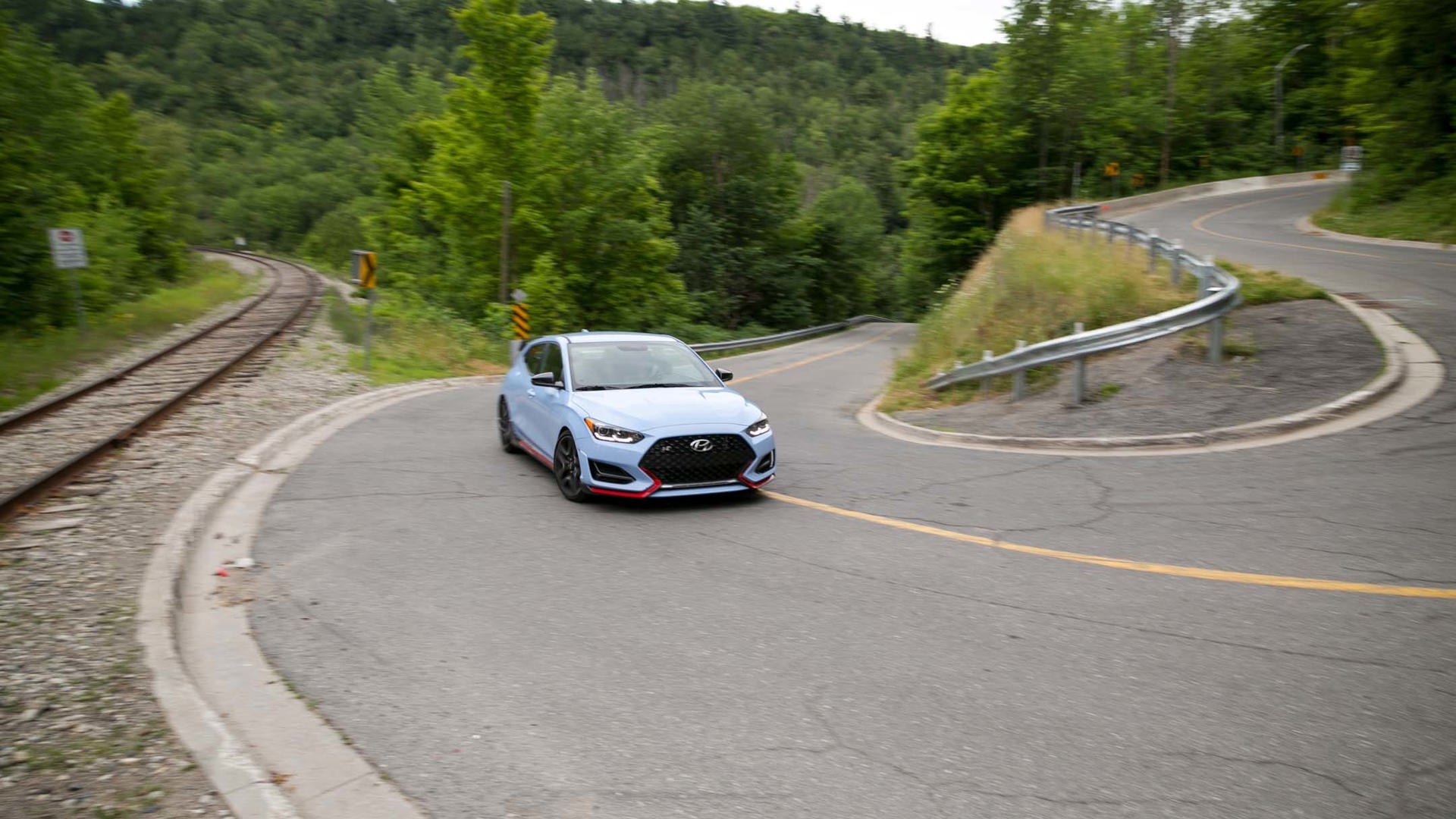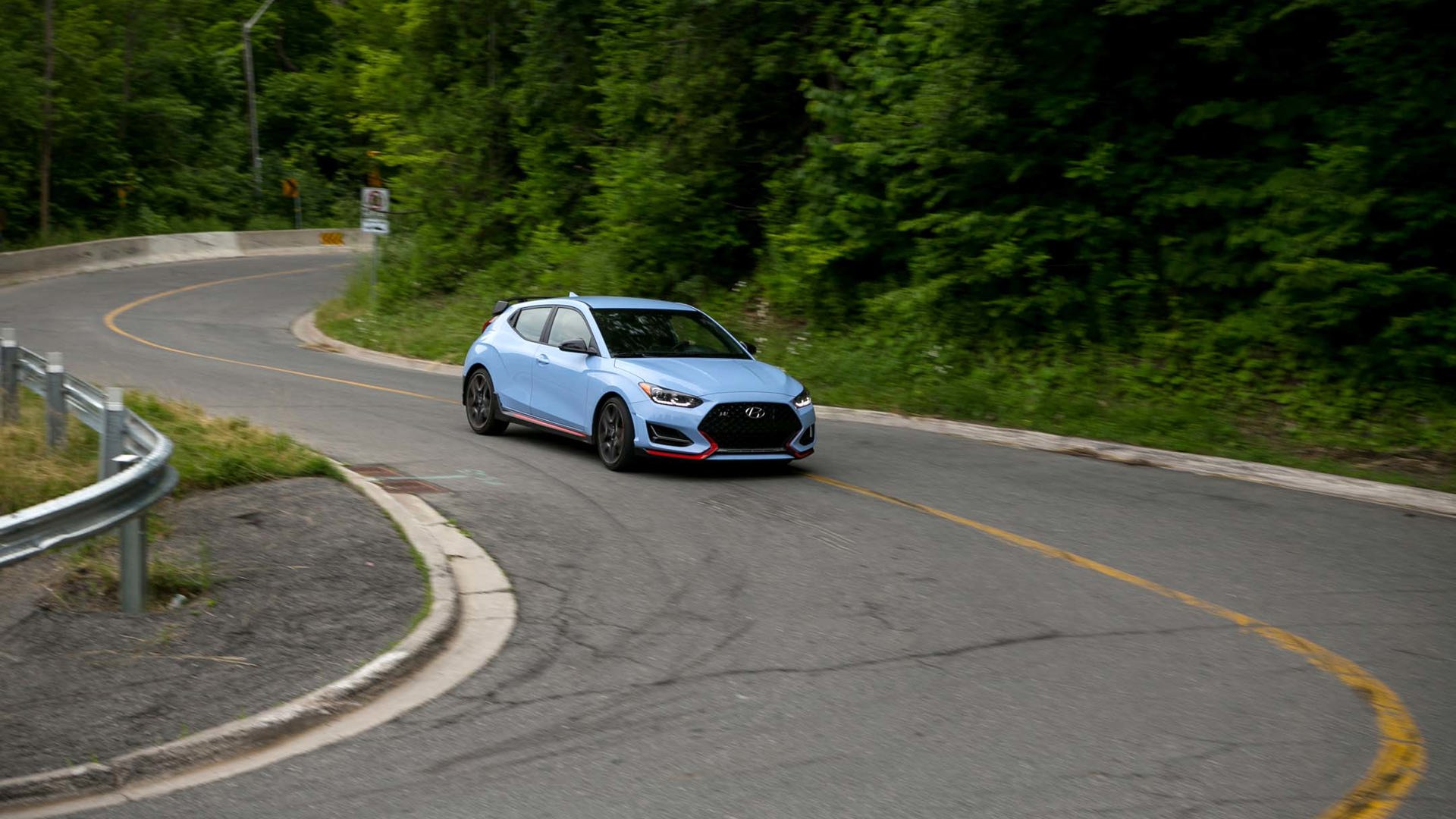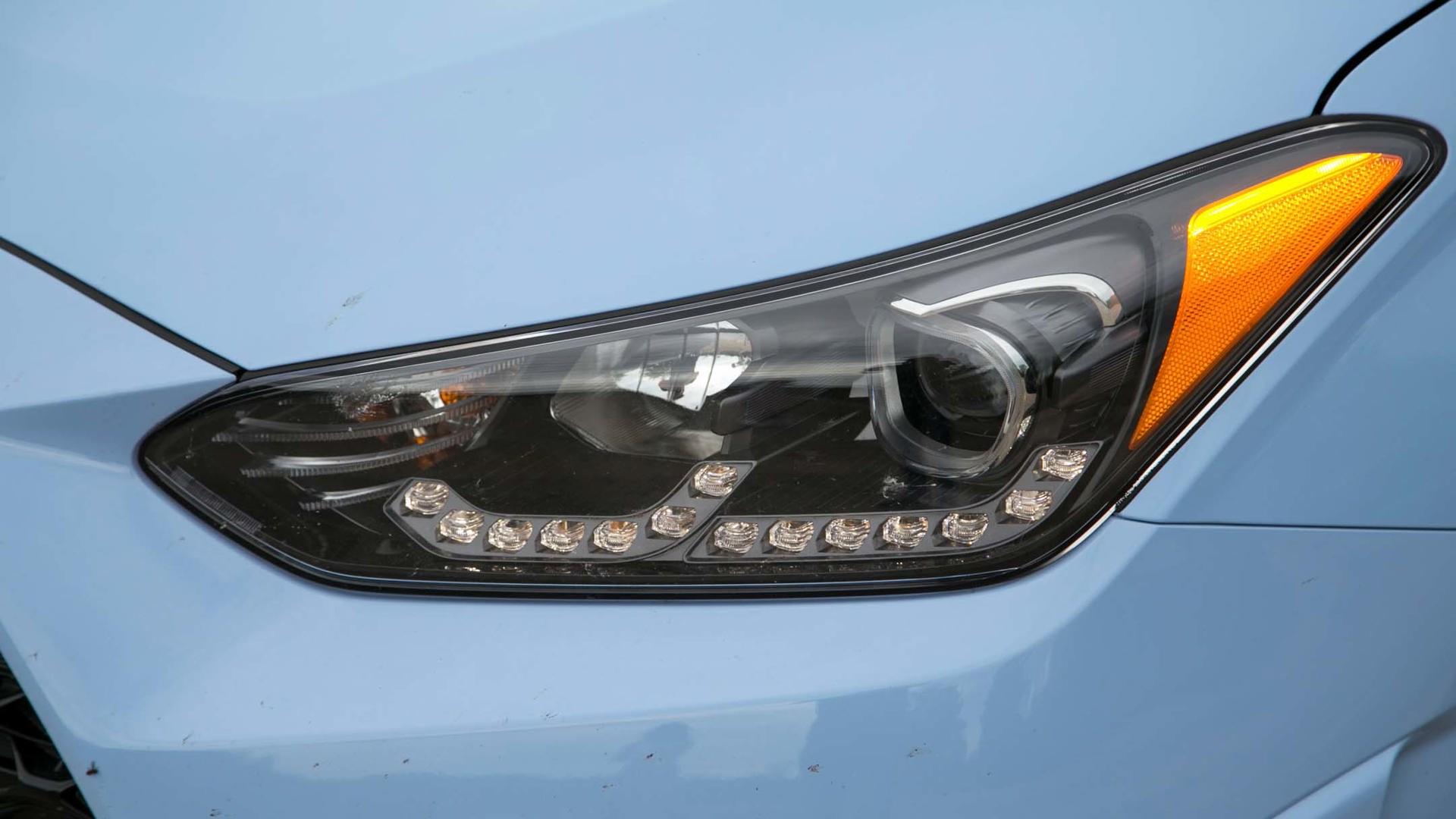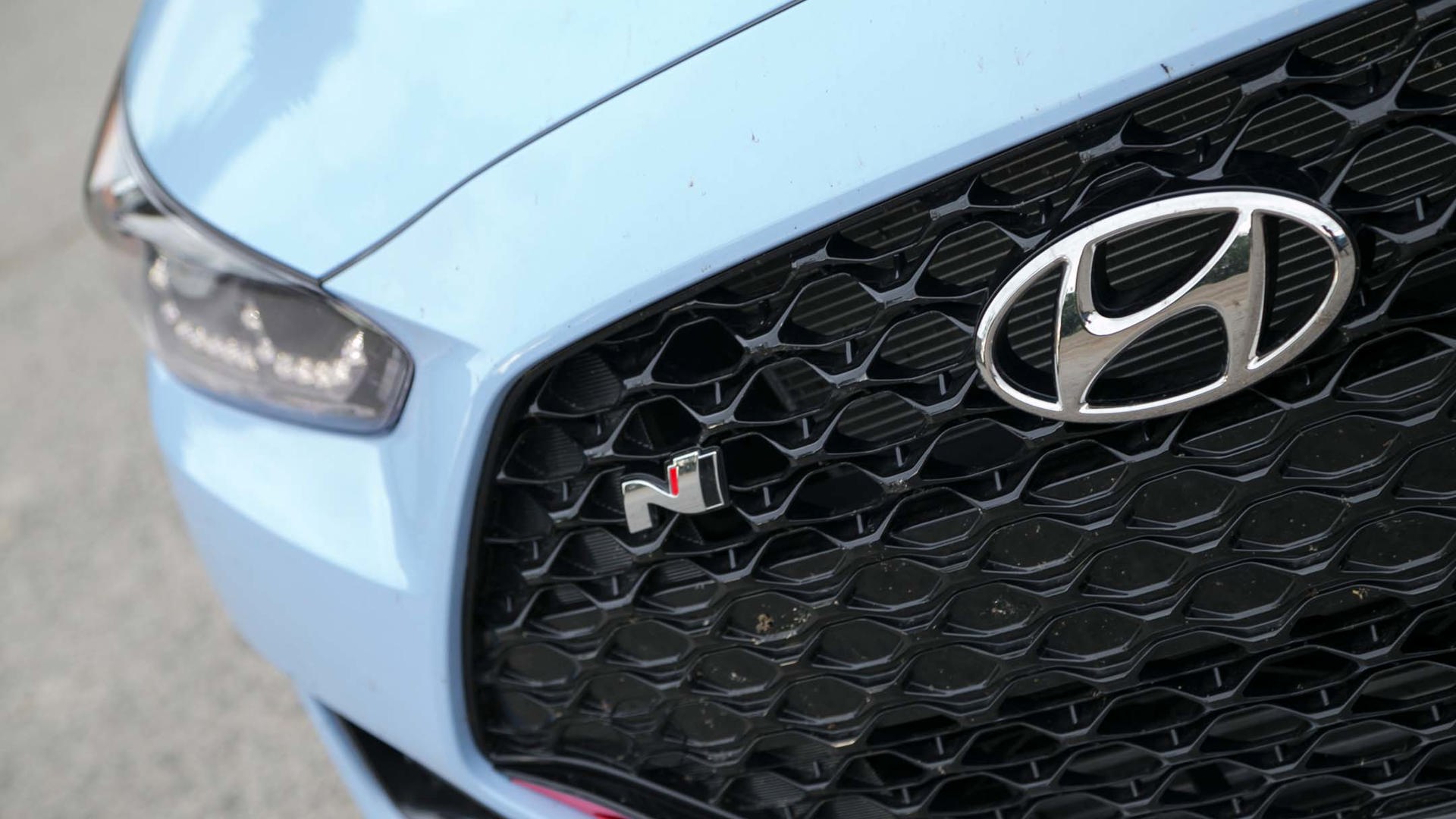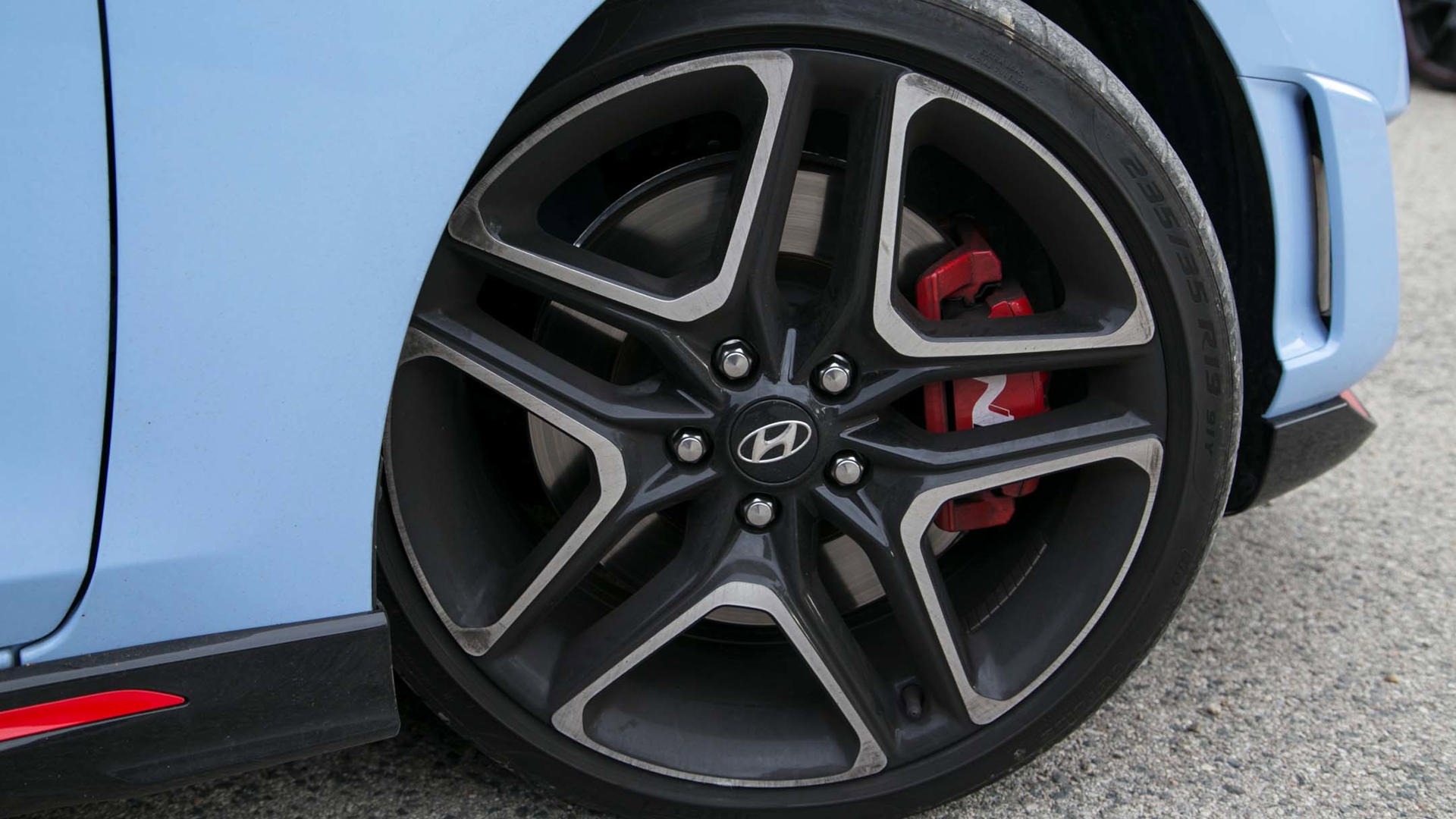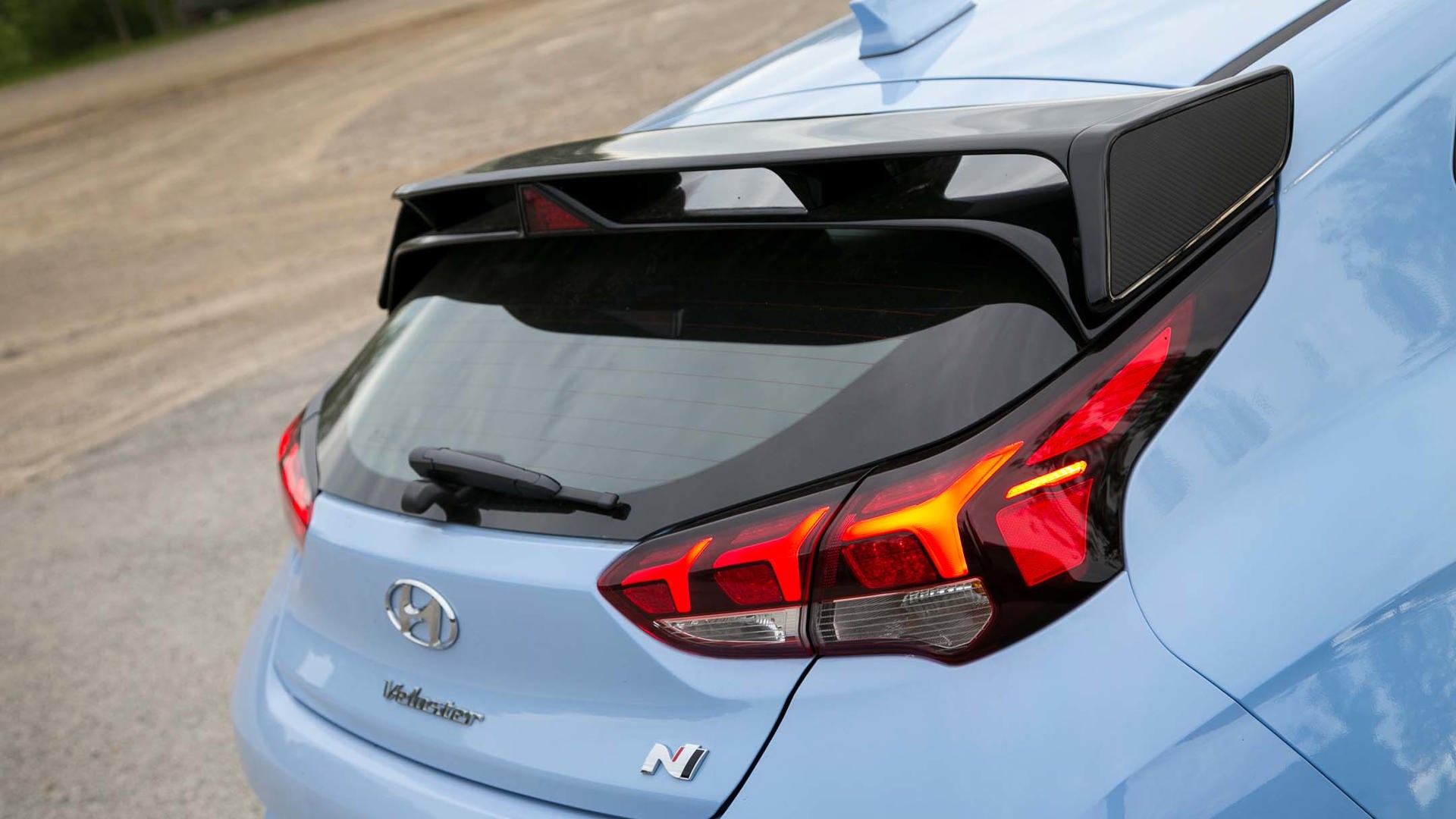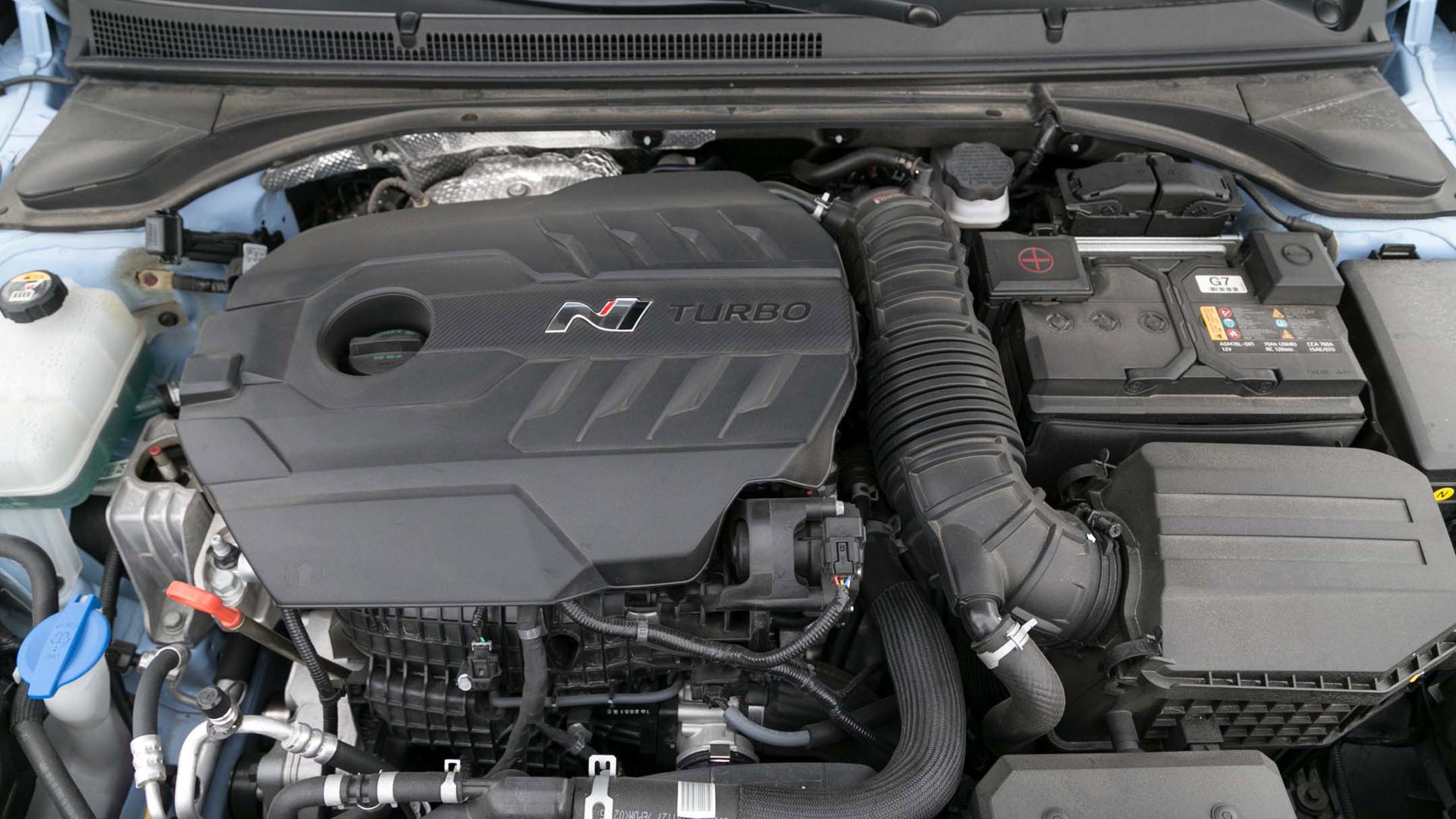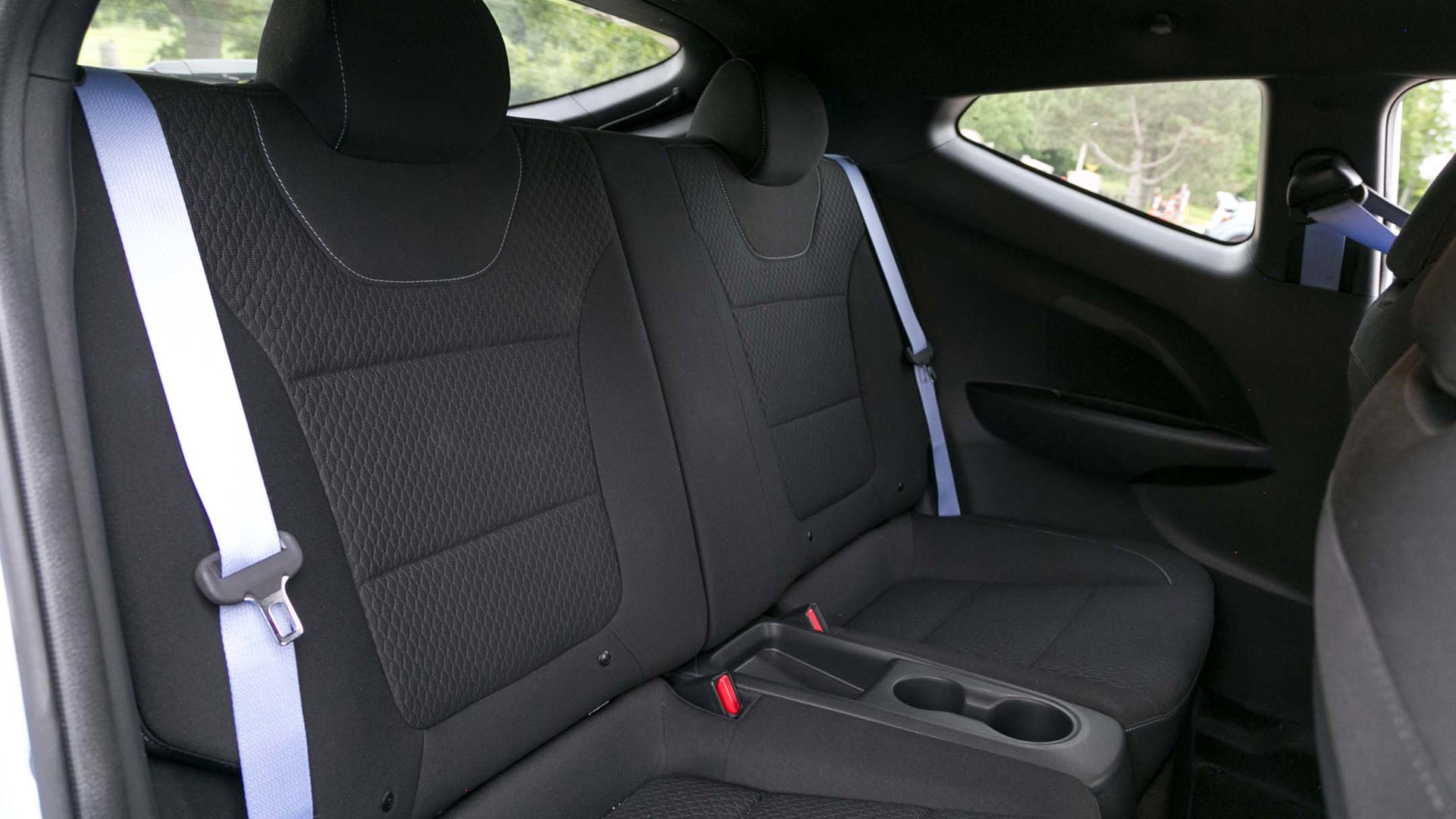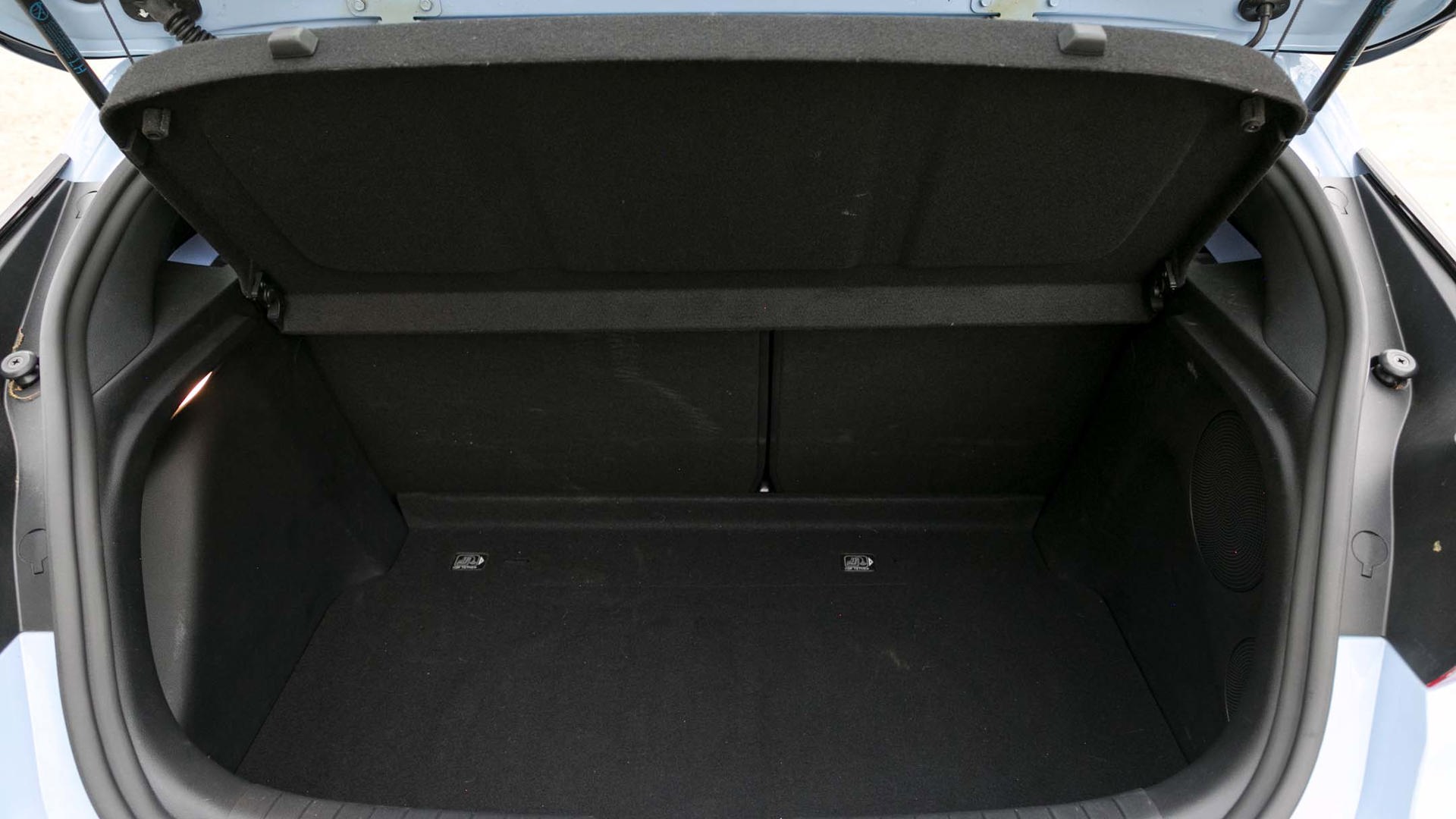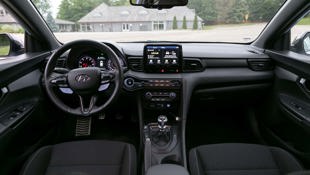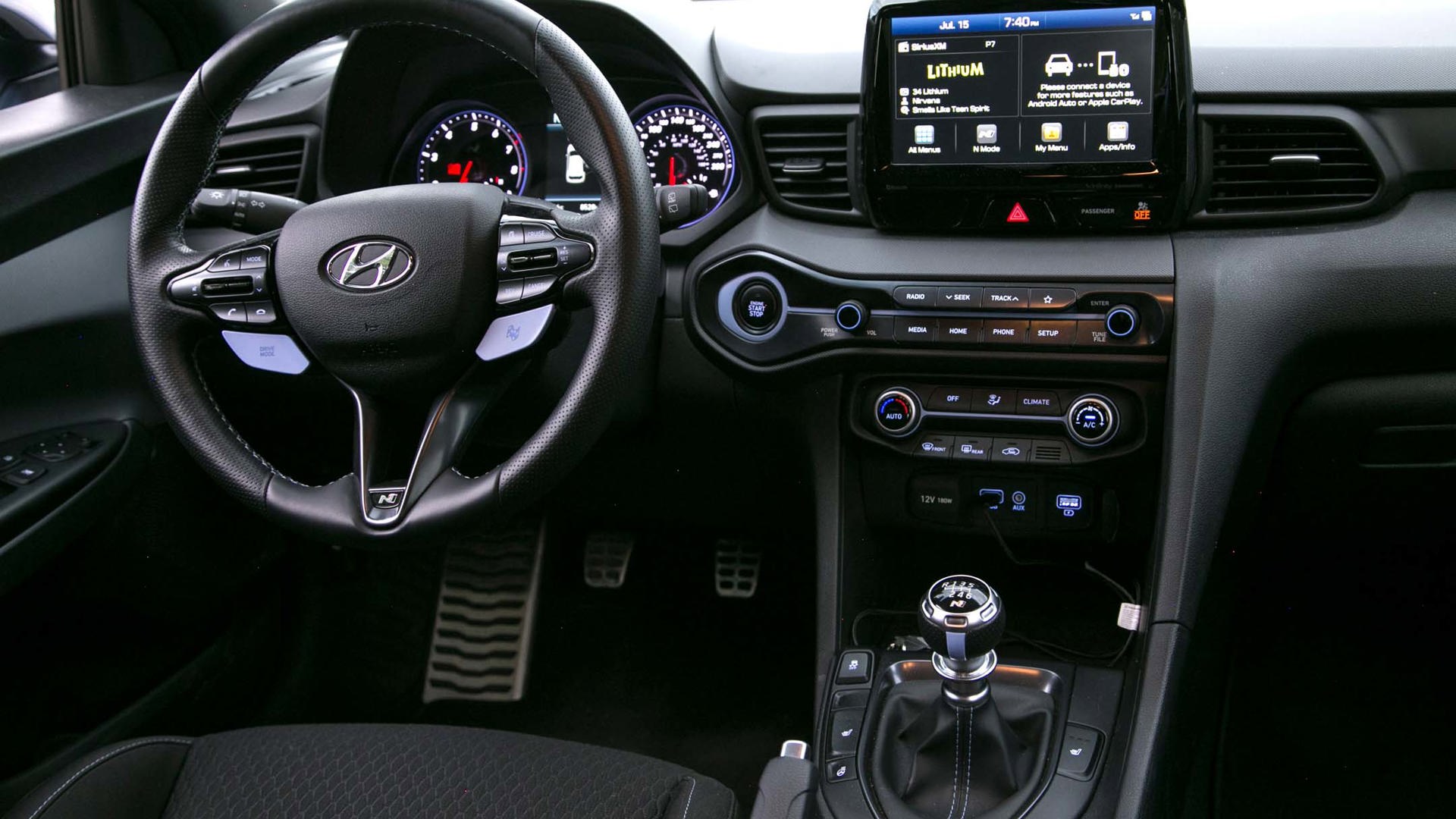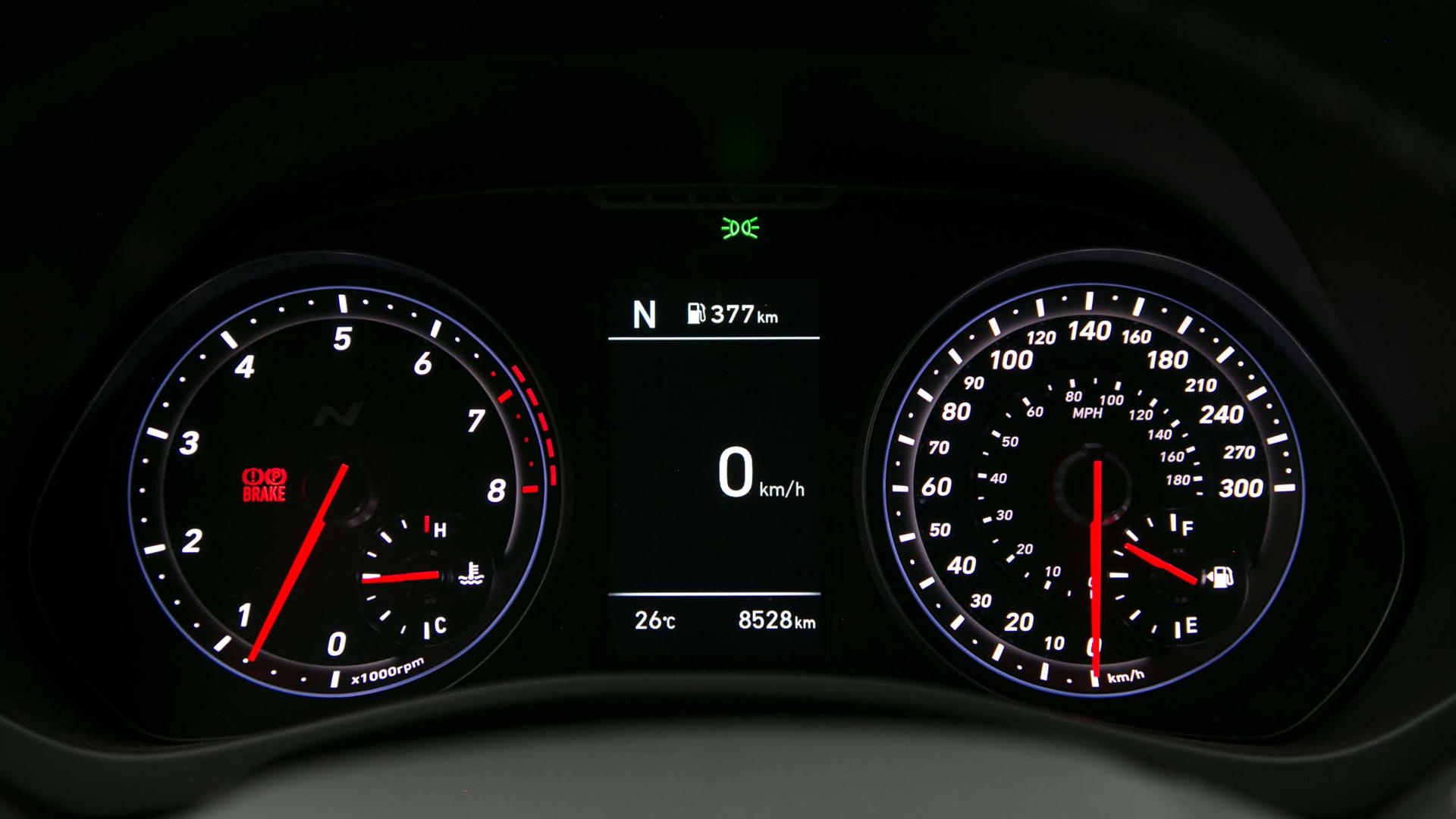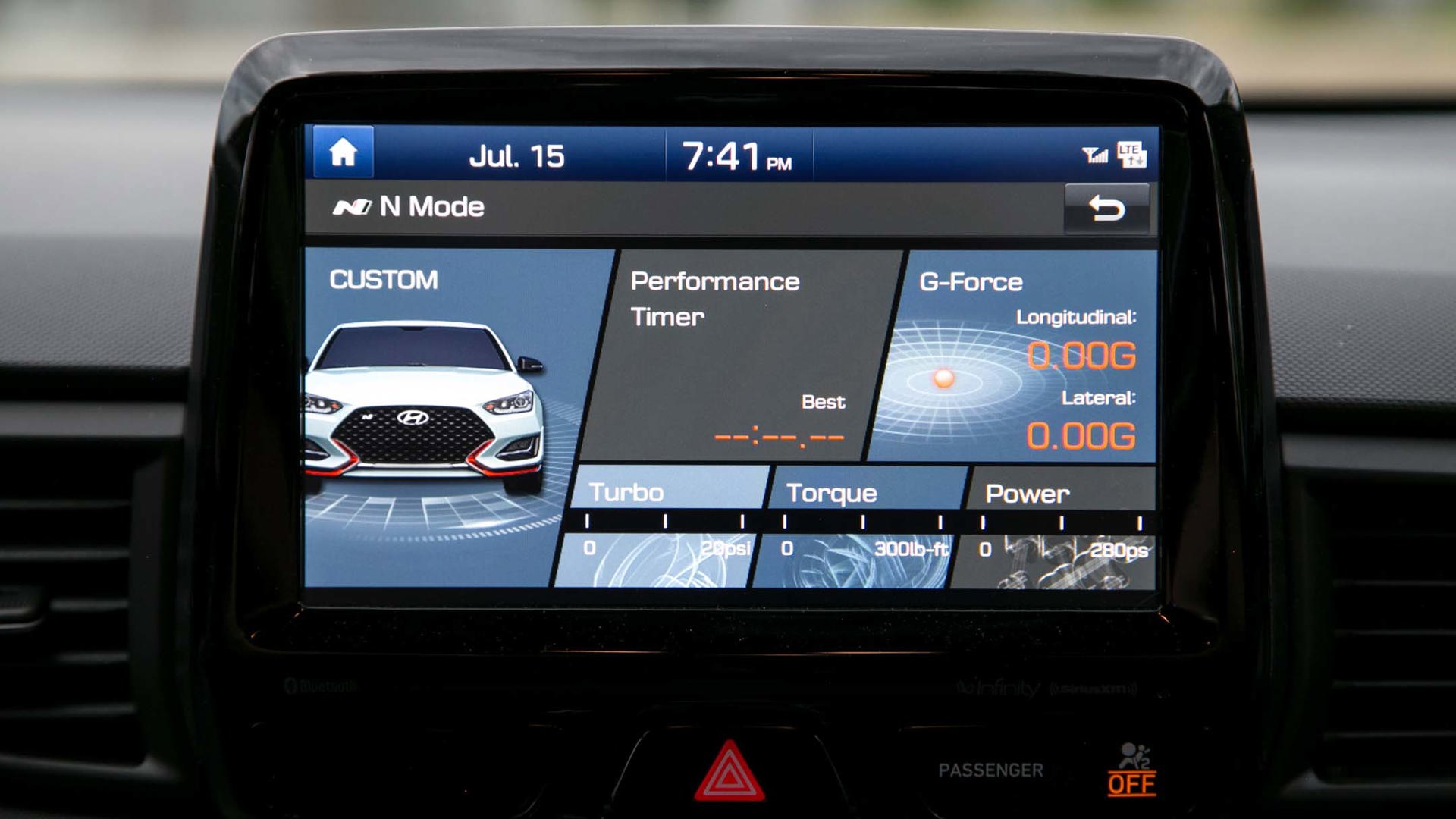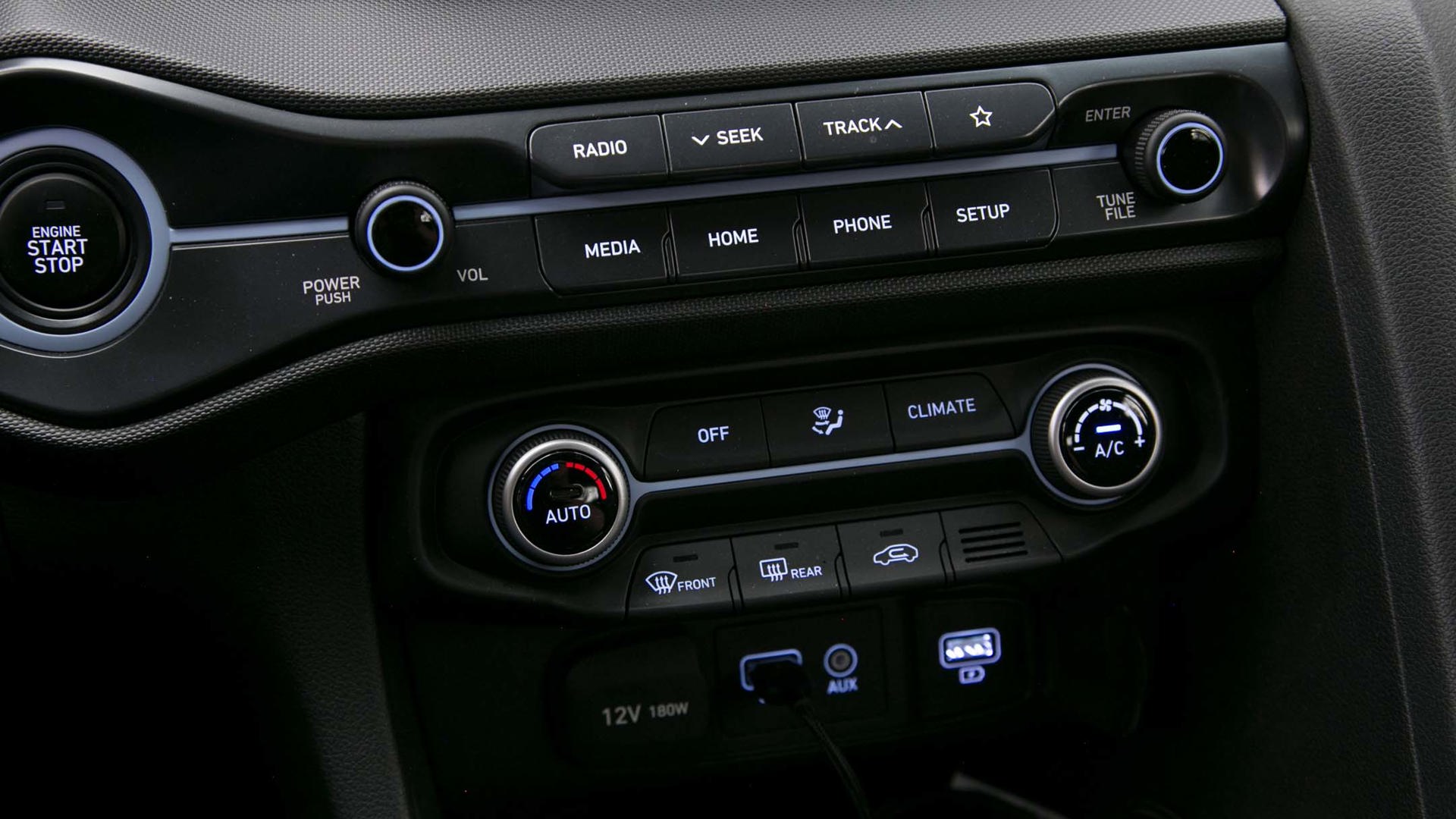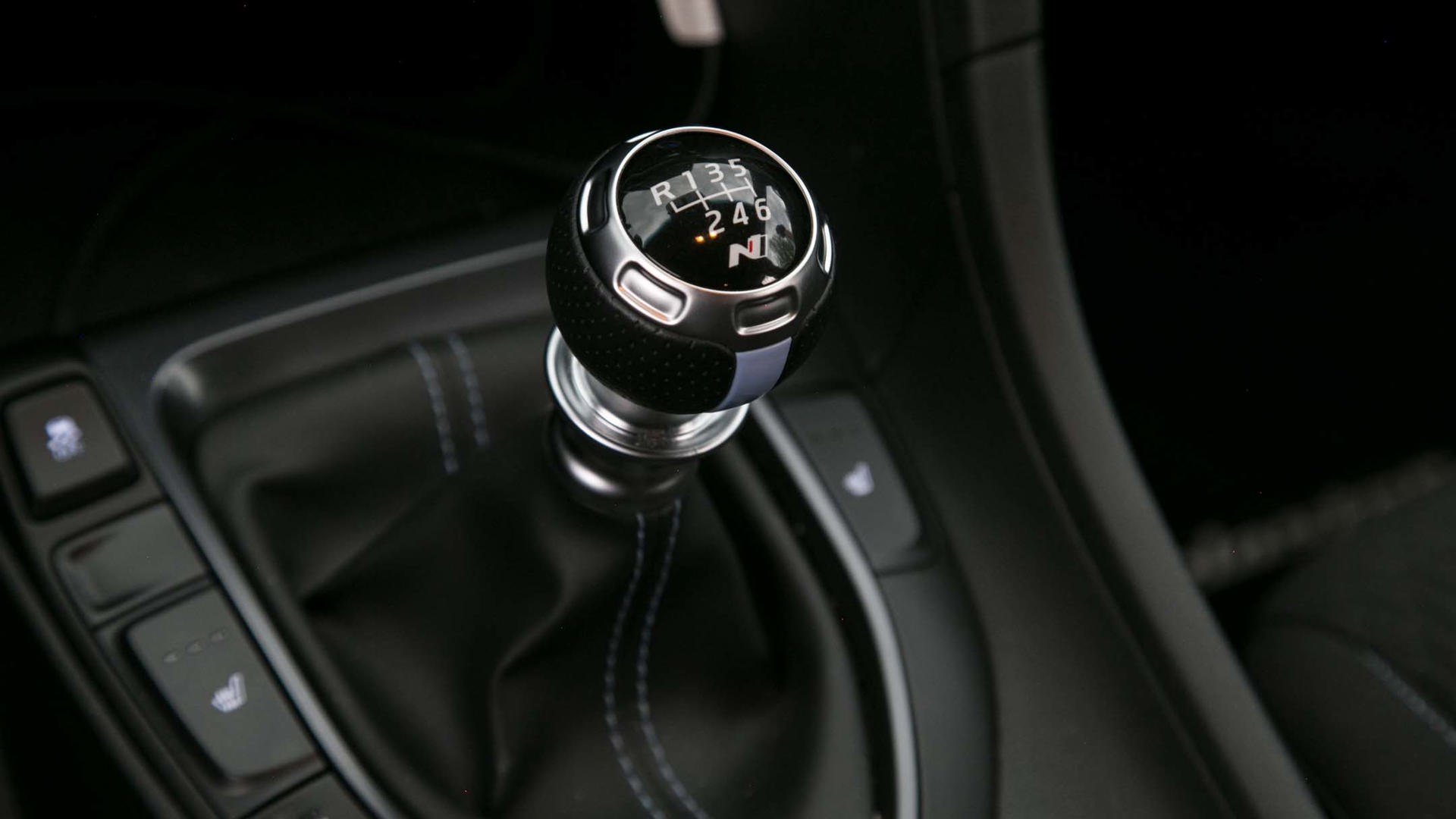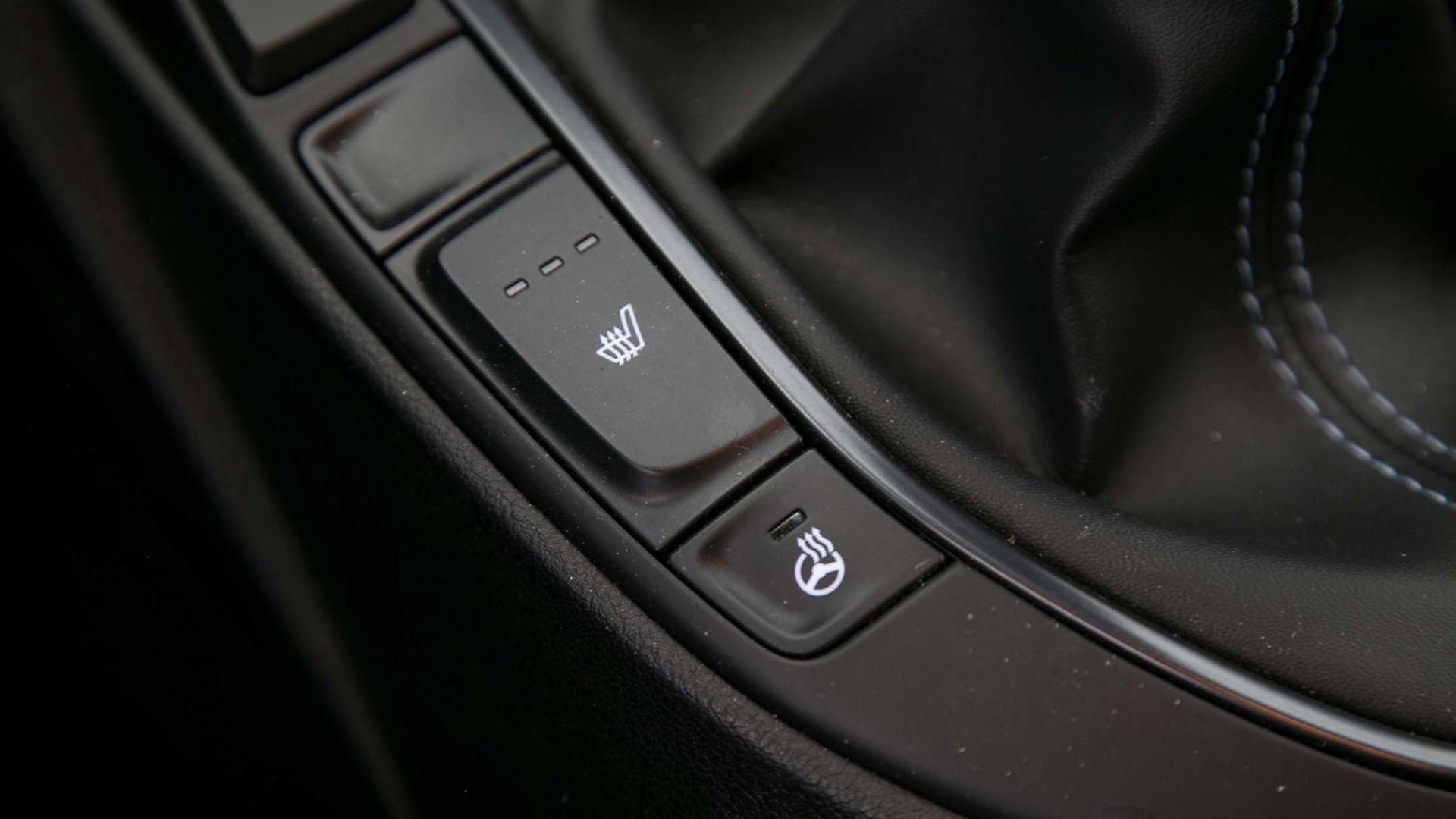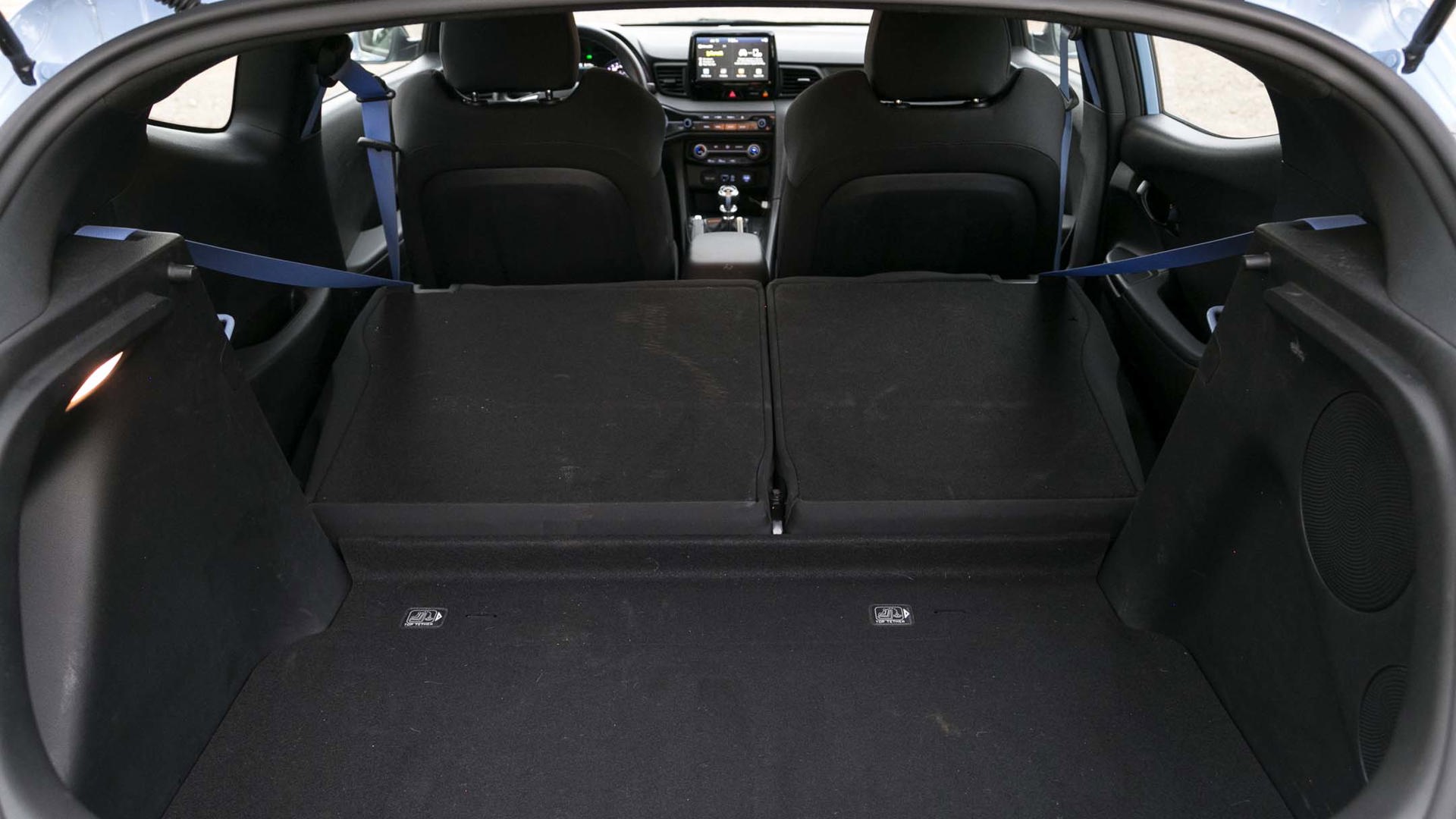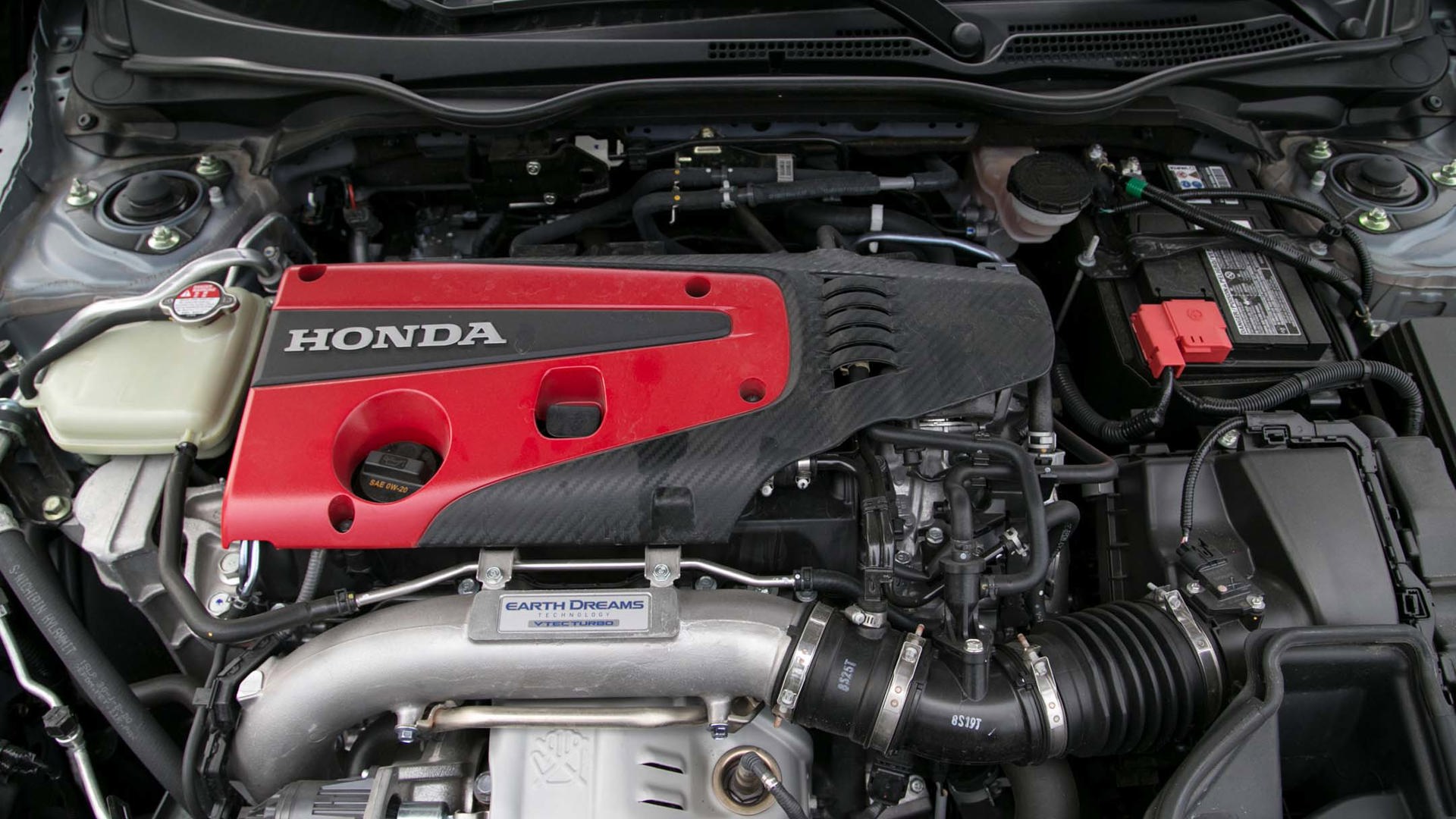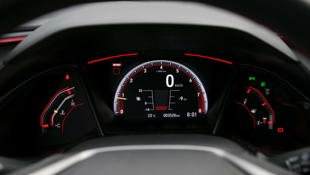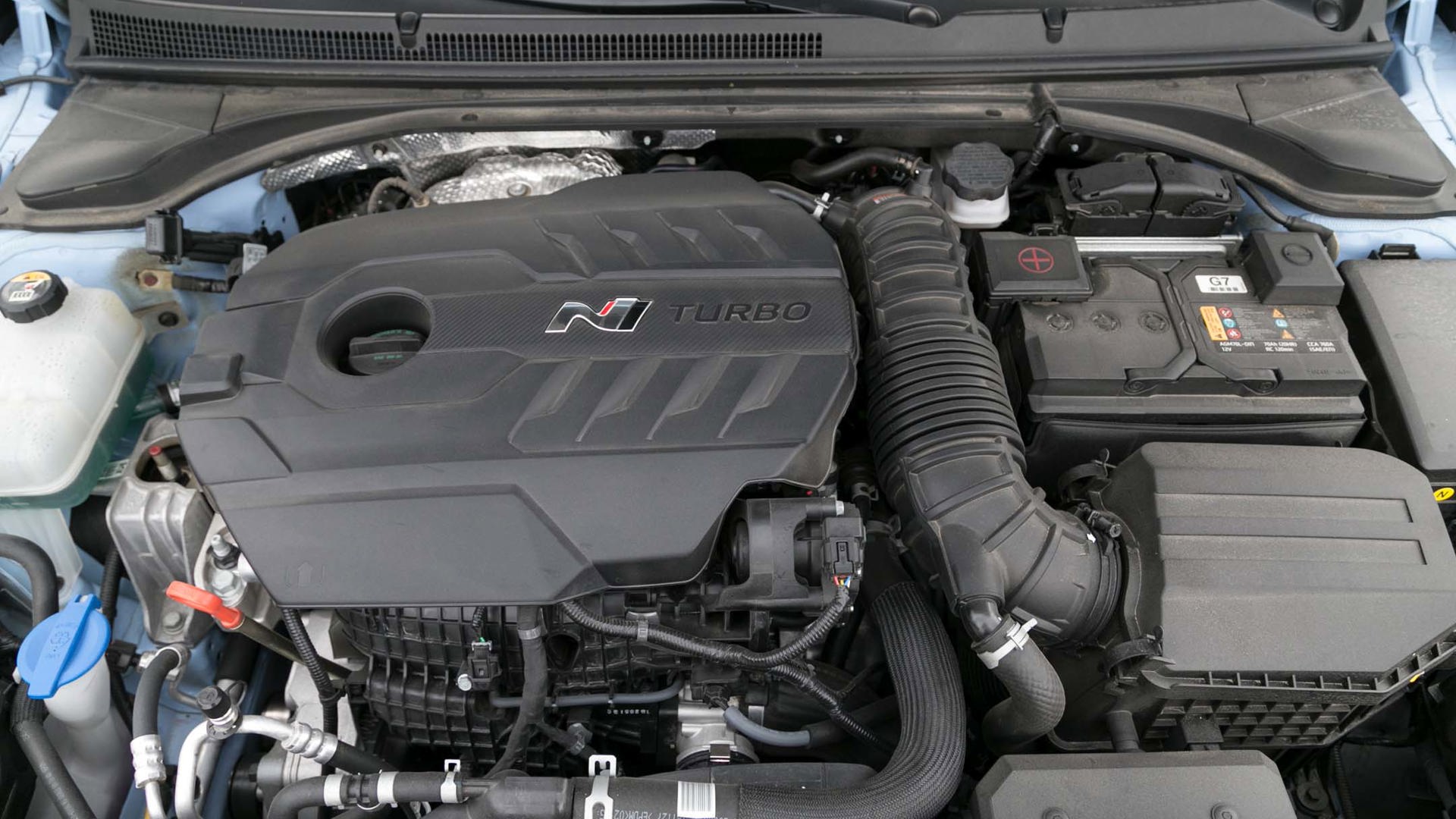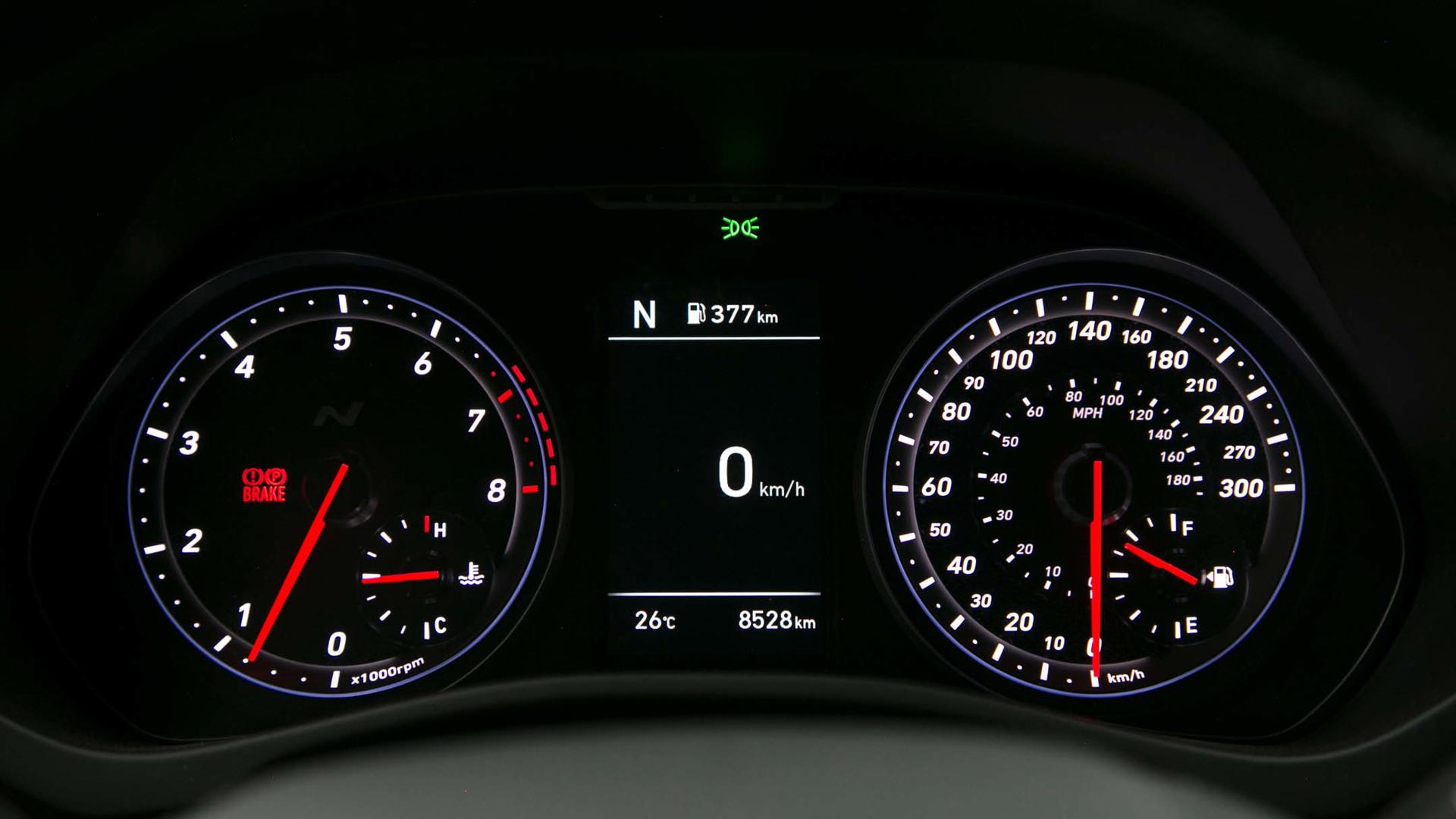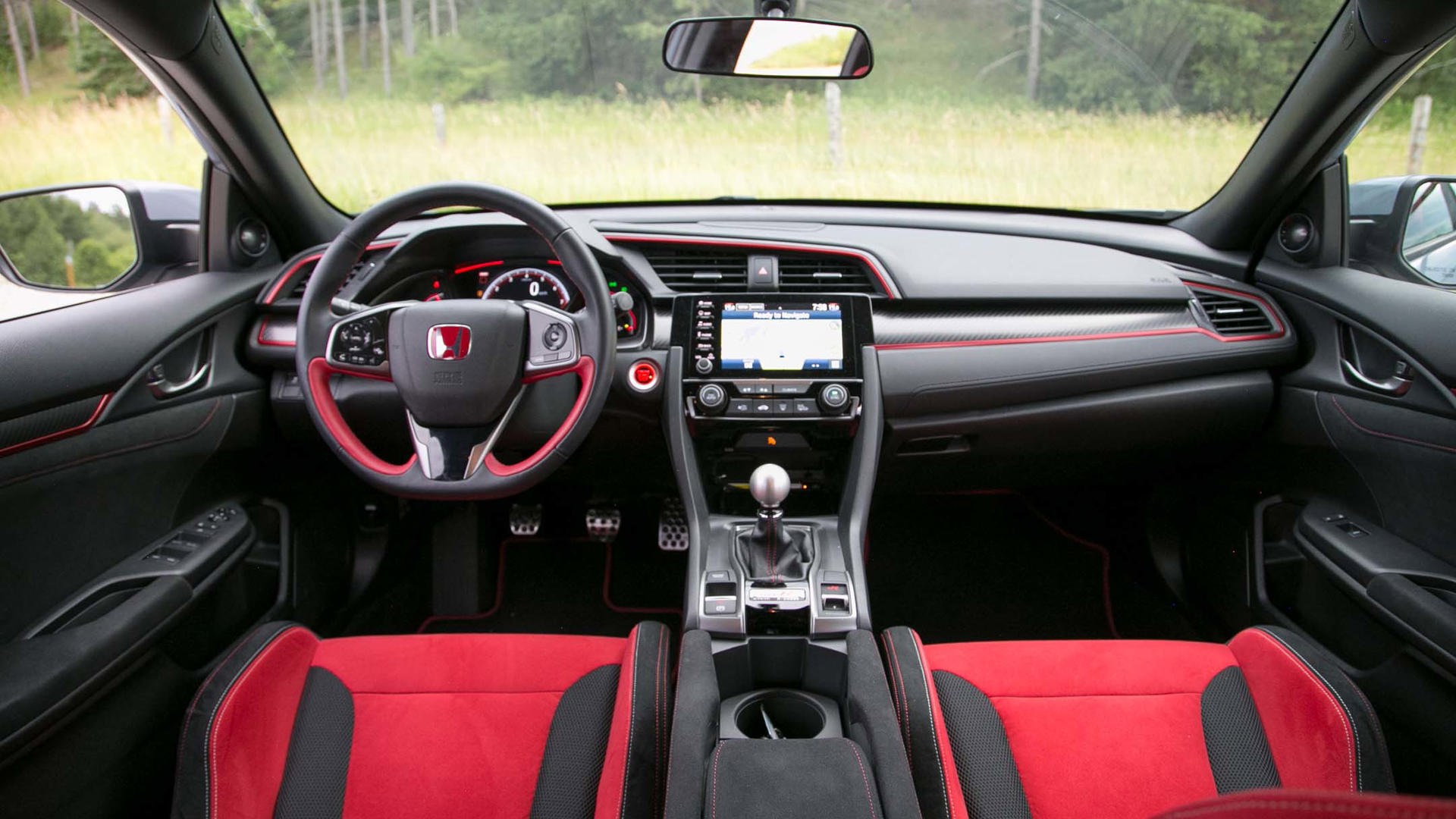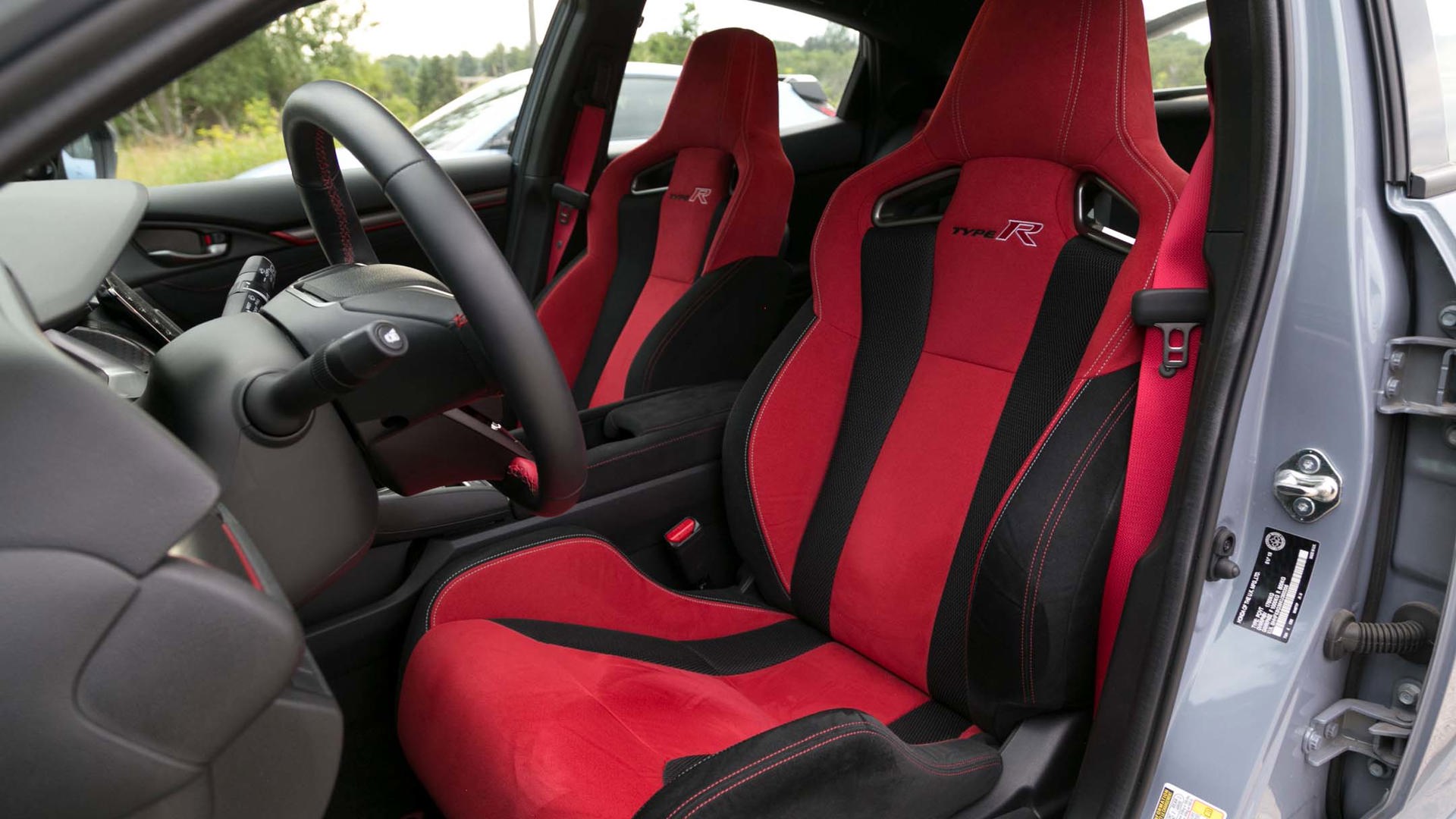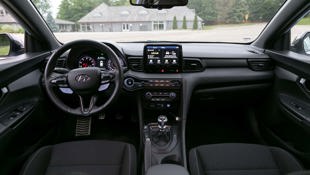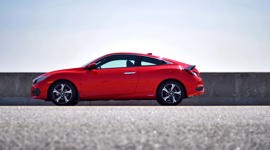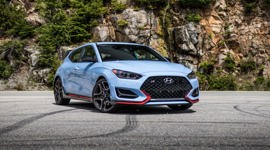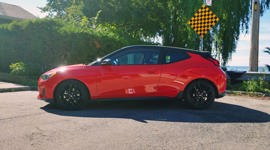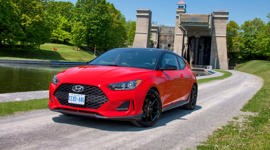Comparison Data
|
2019 Honda Civic Type R
|
2019 Hyundai Veloster N
|
|---|---|
|
Engine Displacement
2.0L
|
2.0L
|
|
Engine Cylinders
I4
|
I4
|
|
Peak Horsepower
306 hp @ 6,500 rpm
|
275 hp @ 6,000 rpm
|
|
Peak Torque
295 lb-ft @ 2,500 rpm
|
260 lb-ft @ 1,450 rpm
|
|
Fuel Economy
10.6/8.3/9.6 L/100 km cty/hwy/cmb
|
10.6/8.3/9.5 L/100 km cty/hwy/cmb
|
|
Cargo Space
728 L
|
565 L
|
|
Base Price
$41,690
|
$34,999
|
|
A/C Tax
$100
|
$100
|
|
Destination Fee
$1,655
|
$1,705
|
|
Price as Tested
$43,445
|
$36,804
|
|
Optional Equipment
None
|
None
|
Remember a time when drivers actually, you know, drove instead of sitting there mindlessly keeping a finger on the steering wheel while the car does everything for you? So do we.
And so do Honda and Hyundai, apparently, since they’ve each brought forth a glorious gift to motoring enthusiasts. In a world of bloated SUVs, over-eager active safety features, and constantly-variable transmissions, they’ve given us a pair of immensely amusing hatchbacks.
Last year, Honda introduced a new Civic Type R. Long a forbidden fruit for North Americans, earlier generations of the sauciest Civic had a reputation for raw fun and surprising performance chops, and finally, we get the new one here, too.
This year, Hyundai turned loose its first offering from its performance “N” division, the Veloster N.
If driving these cars can’t make you hoot and holler with delight, you deserve the soulless autonomous driving future that awaits us.
Driving Feel
Civic Type R: 9
Veloster N: 8.5
Let’s get right to it. These cars are drivers’ cars, meant for full-on driver interaction. Neither of them is offered with anything but a six-speed manual transmission. Let that sink in. It’s been years since Ferrari has offered a stick-shift and even BMW’s new 3 Series can’t be had with one, but these two hot hatchbacks come only in row-your-own-adventure format.
Magnificent!
The Veloster N is sensationally fun. No matter where a driver needs to go or how short the trip is, the Veloster induces ear-to-ear grins thanks to its joyful gear shifting, engaging steering, and ridiculous, farty exhaust note.
Generally, I’m opposed to front-wheel-drive sporty cars, believing their handling compromises limit the fun too much, but that’s not the case here. The Veloster N’s steering is quick and precise, and the amount of grip from the Pirelli P Zero summer tires is very impressive. Body-roll and nose-dive are negligible, and the Hyundai flits around from corner to corner like a happy housefly.
The Civic Type R’s personality is dramatically different. If the Veloster N is the automotive equivalent of having a giggle fit with a best friend, driving the Type R hard is like the satisfaction one feels at the end of a great workout. It’s more serious fun.
There’s no doubt that numerically, the Honda will outperform the Hyundai in every performance measure. If I was racing for money at the track, I’d choose the Type R over the Veloster N ten times out of ten. It’s the sort of car that delivers impossibly lofty performance measures, especially for a front-wheel-drive car, and makes the driver feel like an ace behind the wheel.
Despite weighing in a mere 6 kg more than the Veloster, the Civic feels heavier and much more planted, cornering as if it were attracted to the pavement magnetically. The Veloster’s grip is excellent, but the Civic’s is better, and its steering is just as sharp, as if not more so. The Type R will transition in back-to-back corners, even at significant speed, with amazing composure and providing handling I never imagined possible from a car whose front wheels propel and steer the car. One needs to really get silly to push either of these cars into gross understeer.
The Veloster’s brakes (13.6 inches up front), provide lots of stopping power and great bite. The Civic’s brakes are slightly bigger up front, and clamped by four-piston Brembo calipers, but the rears are slightly smaller. Overall braking is excellent from both cars.
Power
Civic Type R: 9
Veloster N: 8.5
A turbocharged, 2.0-litre four-cylinder engine is found beneath the hood of both the Veloster N and the Civic Type R. All Canadian Veloster Ns come standard with the performance package that costs extra for Americans, netting 275 horsepower at 6,000 rpm. The Civic Type R surpasses the triple century mark, delivering 306 horsepower at 6,500 rpm.
Given the aforementioned similarities in weight between the two, the Honda is the quicker car. But that doesn’t tell the whole story. The Type R also makes more torque than the Veloster N – 295 lb-ft at 2,500 rpm, versus 260 at 1,450 – but because it needs more revs, the Hyundai feels every bit the Honda’s match when driving at anything that doesn’t completely wring the Type R’s neck.
Those raised on classic VTEC’s high-revving wail will find the Civic Type R’s “Earth Dreams” engine out of character, and when driven hard, it becomes clear Honda’s engineers pay no mind to the frivolity of tuning engine sounds or exhaust notes. Remember, this is a serious performer, engineered to do the job of driving fast, and fun is apparently of less importance than numbers.
Comfort
Civic Type R: 7
Veloster N: 7
Both cars have electronically adaptive suspensions with selectable drive modes. In its sportiest setting, the Civic abuses its occupants more than the Veloster does, but given the sporting mission of each of these cars, it’s expected that they’ll have firm rides. In less sporty settings, both cars offer a bit more compliance. The Honda’s larger 20-inch tires have virtually no sidewall and transmit the bumps more than the Hyundai’s 19-inchers do.
The Type R’s seats are very aggressively bolstered, surely giving huskier drivers a tight squeeze. The faux suede finish grips passengers firmly, too, helping keep them in place during hard cornering.
The Veloster N’s seat backs also feature significant lateral bolstering, but the seat bottom is less assertive. Again, for a track setting, I expect the Honda’s seats to be the more serious thrones, but day-to-day, the Hyundai is simply more comfortable.
Not so in the back seat, however, where about half of the Civic’s nearly 30 cm of greater length shows up (most of the rest goes into the cargo hold). There’s simply more headroom, legroom, and shoulder room in the back of the Type R than there is in the Veloster N. Both cars are limited to four passengers.
Styling
Civic Type R: 6.5
Veloster N: 8
Neither of these cars is a wallflower, but the Civic Type R looks like it was penned by someone who spent far too much time watching space robot anime in their youth. It’s a mash-up of discordant lines, gashes, fins, scoops, and of course that outlandish rear wing. I’d love to see what the subtler embellishments from the Civic Si – and the absence of that rear wing – would do for the Type R’s styling (I’d keep the big 20-inch wheels, though – they look seriously bad-ass).
The Veloster N is still an angry-looking hatchback, but far less flamboyant than the Type R. It’s got a wing as well, but it’s a less vulgar affair, and the most overt part of the N’s styling is its “Performance Blue” paint with lower trim accents in bright red. Someone at my gym drives a black Veloster N, and it’s properly eye-catching, especially with tinted windows, and not as flamboyant as this blue one.
Inside, it’s much the same story. The Honda’s red seats and seatbelts are bright and wild, but the silver aluminum shift knob is a great, traditional sporting nod (though it gets blazing hot when parked in the sun!). The Veloster’s interior is finished in plain, cheap-looking black fabric, with only the bright blue seatbelts adding any flourish to the otherwise econo-box cockpit.
Aside from a few more red trim pieces and a commemorative plaque, the Type R’s interior is run-of-the-mill Civic, which, given the quality materials used, isn’t a bad thing.
Features
Civic Type R: 5.5
Veloster N: 6.5
Being cars for driving purists, the features and frivolity are kept to a minimum. There’s no adaptive cruise control, powered or cooled seats, or even a sunroof in either of these cars, but the Veloster does at least have a heated steering wheel and heated front seats.
User Friendliness
Civic Type R: 8.5
Veloster N: 8
Both have decent sound systems integrated into their infotainment units with modest-sized touchscreens, and each system is exceptionally user-friendly, with Apple CarPlay and Android Auto included.
Simplicity is key here, and both cars are about as straightforward as modern systems come, with sensible menus and steering-wheel buttons to complement the knobs and key-function buttons found on the dash.
The Veloster is docked a half-point here simply for its lack of integrated navigation system, since using a smartphone’s data for all your mapping can get costly.
Practicality
Civic Type R: 8
Veloster N: 6.5
Hatchbacks make great sense due to their excellent space efficiency and flexibility. Despite condensed exterior dimensions, these two-box designs can hold a lot stuff – even bulky cargo – under those liftgates.
These machines each have split-folding rear seats to maximize their cargo carrying capabilities; but with an extra 150 mm or so in length in the cargo area, the Civic Type R’s luggage hold, at 728 L, is a notable 160 L larger than the Veloster N’s.
What’s more, the Civic’s four proper passenger doors trumps the Veloster’s unique three-door format (one long door on the driver’s side, and two shorter ones on the passenger side). I suspect Hyundai is hanging on to this gimmicky idea more for Veloster heritage than actual functionality. A four-door Veloster would still look great and offer 25 percent better cabin access. Plus, the long driver’s door is more challenging for ingress and egress in a tight parking lot than a shorter door would be.
Safety
Civic Type R: 6.5
Veloster N: 6.5
By contemporary standards, these cars are either refreshingly devoid of incessant safety nannies, or they’re veritable death traps, depending on your perspective. Most driving enthusiasts will surely presume themselves capable enough drivers to not require lane-keeping assistants, automated parking aids, or even blind spot monitoring, which is a good thing, since neither of these cars have those functions.
Still, the passive safety requirements – a multitude of air bags, plus stability and traction control, brake assist, great headlights, and a good solid crash structure – are all present and accounted for.
Fuel Economy
Civic Type R: 6.5
Veloster N: 6.5
The Honda Civic hatchback and Hyundai Veloster, in their more pedestrian trims, are commendably efficient machines. With larger engines and the turbo boost dialled up, the Type R and N are efficient by high-performance car standards, but not so much by compact hatchback standards.
They’re rated exactly the same for both City and Highway numbers; however, the Veloster N ekes out a 0.1 L/100 km fuel consumption advantage over the Civic in the Combined rating, posting 9.5 L/100 km. For me, none of those figures were attainable due to the fact that I possess precious little self-control and frequently revved the engines just for the enjoyment of it, thereby burning more fuel.
Value
Civic Type R: 6
Veloster N: 7.5
The Civic Type R out-performs the Veloster N, plus it has more interior and cargo space, and is finished with nicer materials inside, but a buyer needs to pay for all that superiority to the tune of more than $6,500 extra. Is it worth it? To those looking for a track weapon, yes, it probably is; but otherwise, I’m not so sure. Nearly $42,000 for a garish Civic could be tough for a lot of folks to justify, no matter how well-engineered it is (though Honda is having no trouble moving Type Rs). Conversely, the $35,000 Veloster N strikes as a good value in the affordable fun car segment.
One other note: at the time of writing, the lease rates on the Honda are 3 percent higher than the Hyundai, meaning that at the end of a standard 36-month lease, the Civic Type R will have cost $5,600 more than the Veloster.
Conclusion
Winner: Hyundai Veloster N
Objectively, the Civic Type R appears to be the runaway winner of this head-to-head comparison, with better performance and practicality. It’s the coupling of those two strong points that draws people to sporty hatchbacks in the first place. And yet, when factoring the notably better value of the Veloster, it evens things out a bit more. For many Veloster N buyers, the significantly higher cost of the Civic Type R would eliminate it from the shopping list straight away.
But beyond the numbers, the Veloster N is the car that is simply much more fun to live with every day, and that’s what makes it absolutely the one I’d rather have.

